


















Tommy Housman
Creative Directors
Auden Phillips
Nina Wilson
Designers
Abbey Kyle
Auden Phillips
Kennedy Kain
Konner Staley
Myia Payne
Allison Borchard
Nina Wilson
Ale Espana
Madison Adams
Editor
Collin Wilson
Writers
Kalea Reeves
Javad Dehghan
Gabriel Long
Rachel Hoke
Myia Danek
Bev Rowley
Tommy J Housman
Grace Burnell
Lucas Jablonski
Madchen Fox
Madison Adams
Grace Gleisner
Photography & Video
Madison Adams
Collin Wilson
Tommy J Housman
Illustrators
Tommy J Housman
is the University of Evansville’s student magazine. It is written, edited and designed by and for UE students and published six times during the academic year. Circulation is 1,500 distributed to 18 campus locations and housed online at www.crescent.evansville.edu
The Crescent is funded through advertising sales and a subscription fee paid on behalf of students by the Student Government Association.
Crescent Magazine welcomes letters from UE students, faculty, staff, administrators and alumni, but material the CMEB regards as libelous, malicious and/or obscene will not be published. Letters should not exceed 250 words. For verification, letters must include the author’s name, class standing or title and email address. Crescent Magazine does not print anonymous letters or those that cannot be verified. Letters will be edited as needed.
Commentary expressed in unsigned editorials represents a consensus opinion of the magazine’s Editorial Board. Other columns, reviews, articles and advertising are not necessarily the opinion of the CMEB or other members of staff.
SOBA, University of Evansville, 1800 Lincoln Ave., Evansville, IN 47722
Editorial e-mail: th208@evansville.edu www.crescent.evansville.edu facebook.com/UECrescentMagazine twitter.com/crescentmagazi1 instagram.com/UEstudentmedia
The Memory Behind The Eyes
The Rise and Rise and Rise of a Midwest Princess Eating Around Campus
To Go or Not To Go? That Is The Question
The End of an Era: The Final COVID Class
UE Counseling and Disability Services
We Must Vote!
Never Again: Gun Violence in America
Erik Hurt Prioritizes Students
This Is Not Normal Harlaxton Haze
Harlaxton Hijinks: Albania
Archaeology Majors See The World




Javad Dehghan
Too much sanity may be madness and the maddest of all, to see life as it is and not as it should be.
Don Quixote
Why do we seek love? Is it truly possible to attain happiness in its absence? Throughout life, many endeavored to escape love, and in many respects, succeeded. I regarded love as a formidable adversary, a force both harsh and purposeless. Yet, the question remains: Are we inherently destined to pursue love? It is a question that eludes definitive answers, even to the most enlightened among us.
In the annals of my youth, I found her there, A fleeting spark in time’s endless expanse. Her presence, like a whisper in the air, Left shadows in my heart, a silent dance. In her gaze, I saw a flicker of light, A spark that once warmed the darkest night. Eyes once filled with tender dreams and grace, Now shadowed by the pain they cannot erase. Love was a promise I longed to keep, But the echoes of disappointment run deep. In every glance, I once found my guide, Now it’s a reflection where hopes collide. I chase the echoes of a once bright flame, Yet doubt shadows every whispered name. The heart I trusted seems so frail, As if it too, might shatter and fail. Belief in love wavers like a distant shore, A fragile hope I can no longer ignore. For in the mirror of her eyes, I see The ghost of dreams that were never meant to be.
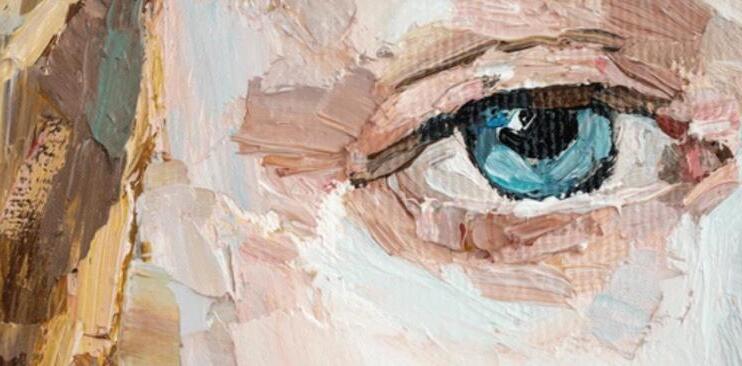
Still there are times to Times, I find it difficult to believe my own words, my thoughts, my will, and my abilities. I speak from the heart when I say that there are moments, or perhaps always when I struggle to believe anymore. For what does it matter how many people surround you, or how vibrant your life appears, if the connections lack authenticity? The mere presence of others, or the semblance of life, holds no true value if it’s devoid of genuine meaning. In the end, only what is real and true can truly sustain us; everything else is but an illusion, a shadow of what could be.
“And Summer lease hath all too short a date”
William Shakespeare

On September 22, 2023, Chappell Roan released her first full-length album, The Rise and Fall of a Midwest Princess. The formerly dark indie artist, cursed with cursive singing (God bless her), transformed into a queer anthemic pop princess after ten years of rising and falling in the music industry.
Roan had a difficult start to her career. She was discovered on YouTube in high school, signed to a label, and moved to LA to pursue her career, but was dropped and had to move back home.
“In 2020, I ran out of money like everybody did, and I was a barista working the drive-thru back in Missouri. It was either give it one more shot or maybe go to school and be a biologist,” Roan said in an ABC interview. That year, instead of another biologist, we got her first two singles, “Love Me Anyway” and “California.”
Her synth-pop album takes heavy inspiration from ’80s pop, often compared to Cyndi Lauper, and her campy fashion aesthetic could be seen walking down the mainstage of RuPaul’s

Drag Race. She grew up in a tiny town in southern Missouri, where her queerness and energy were suppressed in that conservative Christian environment, and she makes music for all other Midwest princesses.
“I love where I came from because I have an incredible perspective on the Midwest, which I think a lot of people on the coasts kind of put all Midwesterners in one type of category. But there are drag queens. Some people are trans. There are massive queer communities that are just hidden away in these teeny tiny towns, and I feel like that’s who my real community is,” Roan said.
She only recently blew up at the beginning of this year when she opened for Olivia Rodrigo on her Guts stadium tour, and her career has yet to slow down. She’s performed on The Tonight Show with Jimmy Fallon and NPR’s Tiny Desk Concert, and drew massive crowds at Coachella, the Governors Ball, Bonnaroo, and sang to the largest audience Lollapalooza has ever seen. She’s received praise from Elton John and landed 12th on Rolling Stone’s “The 100 Best Albums of 2023.”
Roan’s newest single, “Good Luck Babe!,” released on April 5th, debuted on the Billboard Hot 100 and currently sits at over 700 million Spotify streams. At the 2024 VMA’s, where she performed the song in a suit of armor surrounded by fire and sword-wielding dancers, she won Best New Artist, and it is not difficult to see why.
The Rise and Fall is built on the foundation of “being a freak at the club,” but it is more than that. Opening track “Femininomenon,” party classic “After Midnight,” strip club anthem “Pink Pony Club,” and “HOT TO GO!,” where she tells you exactly how to dance, and balance fun with an emotional story. “Femininomenon” is about freeing women from unfulfilling marriages, and “After Midnight” is about escaping an overbearing conservative mother to the freedom of dance. “Pink Pony Club” (the only song I’ve ever cried to) is the story of a girl from Tennessee who runs away to West Hollywood and dances in the club. Her southern mother is appalled, but she is just having fun. “It’s where I belong.”
In between these poppier songs are slower songs about heartbreak and loss. “Casual” is to an ex who wasn’t an ex; “Coffee” is about the pains of turning from a lover to a stranger; “Kaleidoscope” is where she tries to decipher the meaning of love in a heartbreak, and in “California,” she sings about moving back home to Missouri after she first failed in LA.
Roan, along with her collaborator Daniel Niger, is a brilliant and honest lyricist. She is permitting all other Midwest princesses to feel pain, to love, to cry, and to bust it down at the club.
She also permits to be out and proud. Chappell Roan is a lesbian, and she doesn’t hide it. “Femininomenon,” “Red Wine Supernova,” “Super Graphic Ultra Modern Girl,” “Picture You,” “Naked in Manhattan,” and “Guilty Pleasure” are all directly and (often) explicitly speaking to a woman. Besides “Girls Like Girls” by Hayley Kiyoko and “I Kissed a Girl” by Katy Perry (and to quote Lady Gaga, “I don’t think she kissed a girl”), there hasn’t been a strong presence of authentic lesbianism in mainstream pop music before Chappell.
“She just means so much to me,” said an anonymous UE student. “Listening to her album was the first time I’ve ever heard gay people just having fun. We’re always dying in the movies, so it’s nice that we get to dance as well.”
Roan pays her dues in the queer community. She takes heavy inspiration from drag queens, including dressing
up as Divine and turning Sasha Colby’s famous “I’m your favorite drag queen’s favorite drag queen” into “I’m your favorite artist’s favorite artist,” and she always gives credit where it is due.
“I think it’s important to give back to the queer community,” Roan said. “They give everything to me.”
Her concerts are also such loving and safe spaces. There are outfit themes for every city, such as a mermaid theme

from the “Casual” music video, pink cowboy for “Pink Pony Club,” and Midwest princess. Her openers are local drag queens from each city.
“It feels like a slumber party, honestly, just a bunch of the girls, gays, and theys dressing up and having fun,” Caroline Platt, an attendee at her St. Louis concert, said.
Chappell Roan is a talent and phenomenon (sorry, femininomenon) not seen in pop in a long time. We’ll be watching with our jaws on the floor where she dances next.


Located on the corner of Lincoln and Weinbach, Honeymoon is the ideal distance from campus. After a long day of classes and procrastination, it’s the perfect place to unwind. Opening the front door, you are greeted by the hiss of espresso machines and the whirring of the coffee grinder. Behind the counter, you’ll find friendly baristas dressed like they live in an indie movie. After a while, they’ll know your name and most likely all your life’s problems. On the back wall are the signature and seasonal drinks written in an artsy script on brown parchment paper. Figuring out what to order at Honeymoon is never easy, especially when a barista suggests their favorite drink. As mentioned above, Honeymoon has a seasonal menu curated by a team of talented baristas. At the time of writing, the fall menu has just come out and the fan-favorite “Sweater Weather” has returned. Fall is all wrapped up by the rich notes of chocolate and the savory taste of peanut butter topped with a dollop of whipped cream. I prefer it iced, but with a favorite bookand a comically-sized mug, hot is the way to go.
The side room features a big bay window overlooking Weinbach and has a couch nestled beside it. Propped up in the corner is a beat-up surfboard depicting a surfing pterodactyl. The walls are decorated with rotating art pieces that are available for purchase. One of the new pieces is an artwork of Toad and Frog sitting at a coffee table. It’s my favorite. The room is lit by hanging string lights that you’d see at most outdoor venues. This gives a much less harsh appearance to the lighting. For seating, there are options for a 6-seater, 4-seater, and 2-seater. Honeymoon keeps a never-ending stream of top indie hits playing in the background that will have you adding to your playlist. A song that captures the playlist vibe is “Archie, Marry Me”
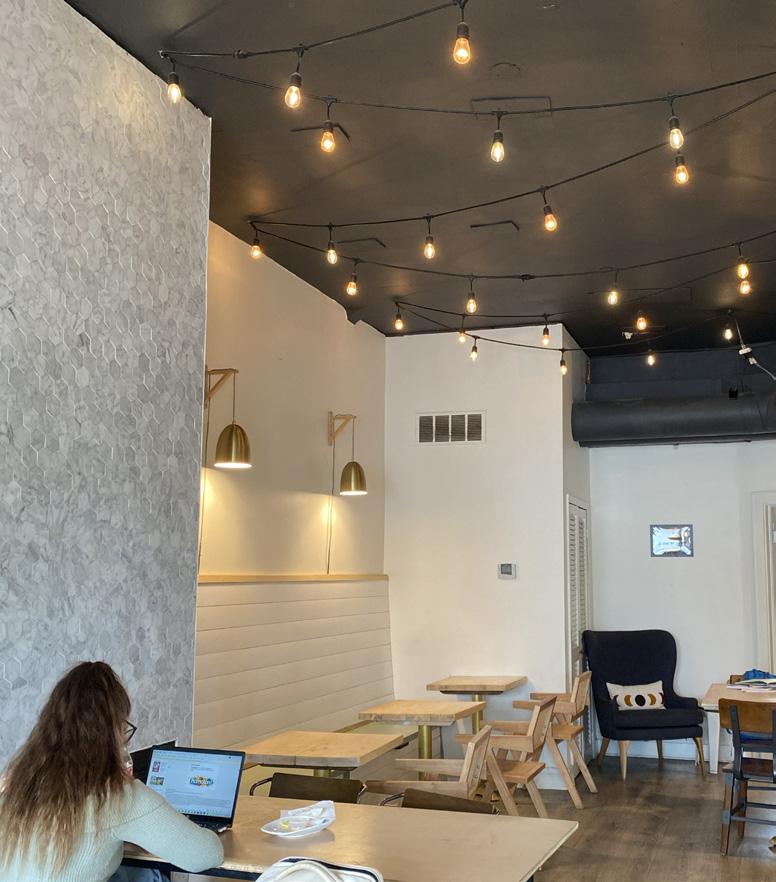

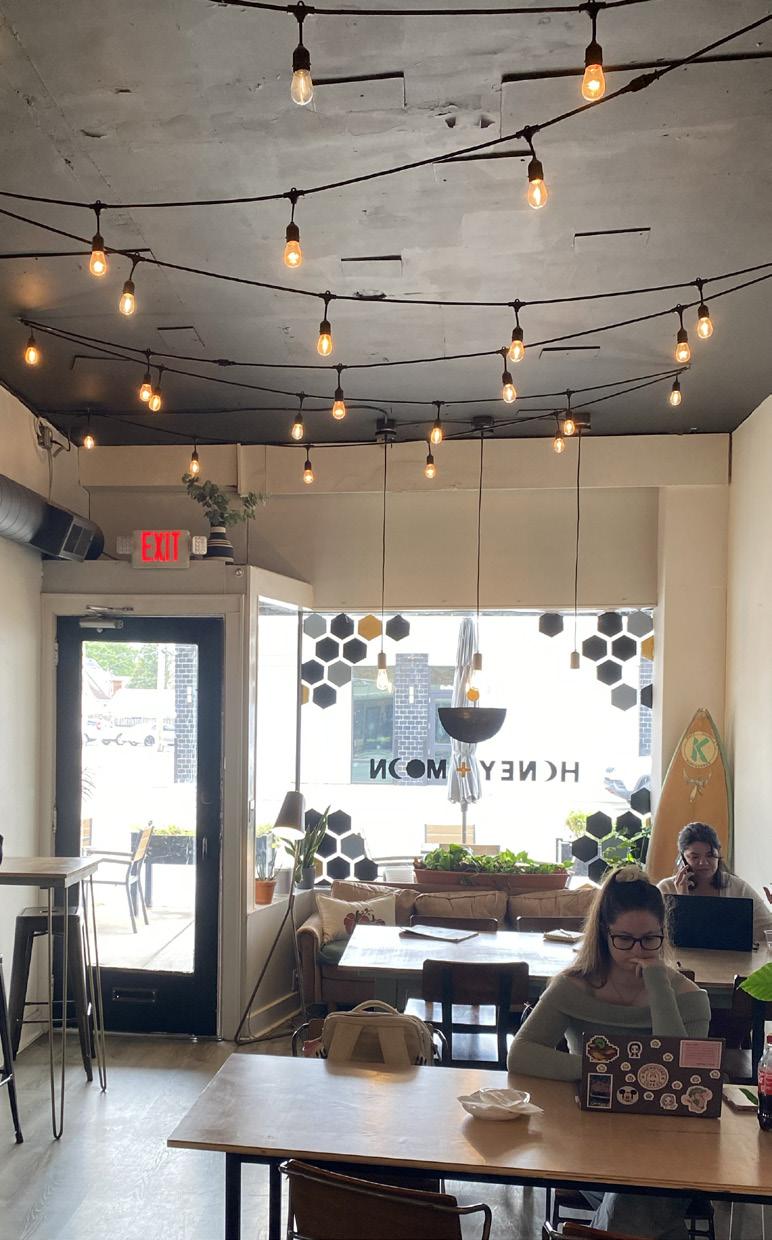
Honeymoon offers lighter fare throughout the day when it comes to food options. One of the most delectable and popular items is Bubble Waffles. Many of the variations are topped with assorted fruits and nuts. If you want to hit your protein intake, Honeymoon offers a “Savory Waffle” with bacon, cheese, and egg topping it. Another popular food item is the Açaí bowl, which always comes out looking like a work of art., if you need a complement to your coffee, Honeymoon has it.

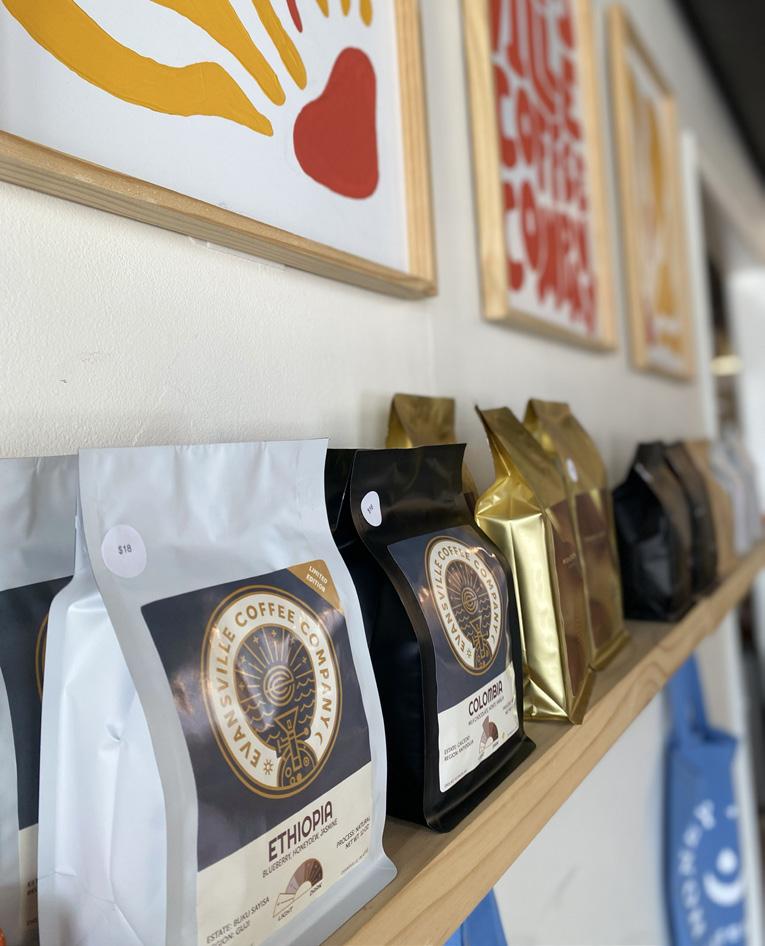

Rachel Hoke
The unfortunate has happened: maybe you have fallen desperately ill, or have gotten injured in some way. In general, but especially if you aren’t from the Evansville area, these can be scary experiences. How do you know when to go to the emergency room? What even is the difference between the emergency room and urgent care? All of this can be hard to navigate, so that’s why I’m here to help! This will not be a comprehensive breakdown, but hopefully, having read it, you’ll feel more prepared to handle emergency medical situations you may find yourself in.
In the most basic sense, the emergency room is for serious illnesses or injuries while urgent care is for less imperative afflictions. The emergency department is more for life-threatening illnesses or injuries, or for severe arm and leg injuries (like broken or fractured bones). The emergency room is not too large in most hospitals, so it should be reserved for people who have a high likelihood of being admitted for treatment. Don’t let this scare you from ever going to the emergency room—remember to think critically about the nature of your affliction when deciding if you need to go. If you do end up going to the emergency room for something that does not need to be treated immediately, expect to wait at least an hour to be seen. Bring something to distract you from any pain you may be experiencing, and go with a friend! Having another person with you is important because they can help you through the visit.
Now, for urgent care: This is where to go when you are not experiencing anything life-threatening, but still cannot wait the time needed to be treated by your primary care provider (the doctor you see for health checkups). For example, you could go to urgent care to get treatment for a urinary tract infection (UTI). The urgent care will likely also have a wait time, and you should still have someone go with you. Urgent care centers, unlike emergency rooms, are usually not open 24/7, so keep that in mind.
Unfortunately, not everything is precisely straightforward in the medical care process. There are instances when you might have a minor illness or injury but should still visit the emergency room. Some of these examples would be if you have a UTI but also a high fever (104° Fahrenheit or higher). Other special instances might be linked to your medical history. If you are on medications that can affect your immune system, or you have histories of cancer or illness, going to the emergency room is a good idea, just in case. How do you figure this stuff out? Ask your primary care provider about the types of medicines you are currently taking and ask if there are any signs or symptoms that would indicate complications from previous illnesses that you should be aware of. Taking control of your medical life can be daunting, but asking questions can act as preparation to help through!
Now that you know some of the differences between the emergency room and urgent care, you should learn where some of the nearest facilities are located! Look at the list below to see a few of the emergency rooms and urgent are centers that are located near campus:
Ascension St. Vincent EvansvilleEmergency 3700 Washington Ave Evansville, IN 47714
Deaconess Midtown-Emergency
600 Mary St Evansville, IN 47747
Deaconess Gateway-Emergency
4011 Gateway Blvd Newburgh, IN 47630
Mercy Urgent Care S Green River Rd
710 S Green River Rd Evansville, IN 47715
Mercy Urgent Care N Green River Rd 2101 N Green River Rd
Evansville, IN 47715
Indiana Exceptional Urgent Care
4972 Lincoln Ave #101 Evansville, IN 47715
Deaconess Clinic Urgent Care Franklin St
2007 W Franklin St Suite B Evansville, IN, 47712
Deaconess Clinic Urgent Care and COMP Center Gateway
4011 Gateway Blvd Suite 100 Newburgh, IN 47630
St Vincent Evansville-Urgent Care
Westside Crossing
100 Rosenberger Ave
Evansville, IN 47712

Save this information for later—you never know when you or a friend might need it! Being prepared is always good, and make sure to also continue taking care of yourselves. College already gives us enough stress, so, Aces, stay safe out there.

In 2024, educational institutions across the nation are witnessing history. This year marks a significant milestone in the aftermath of the Covid-19 pandemic, as students who took extended breaks or deferred participation due to the pandemic are now in their very last season of eligibility.
The term “red-shirt” traditionally refers to athletes who postpone their participation in competitive sports to extend their eligibility. However, during the COVID-19 pandemic, this concept expanded to include students who delayed their academic progress or athletic participation due to the unprecedented disruption.
In 2020, schools and colleges worldwide faced closures, transitioning to remote learning environments. Many students found the shift challenging, leading to decisions to “red-shirt” their academic year. Similarly, studentathletes paused their participation to avoid the risks associated with in-person activities and to preserve their eligibility for future seasons. For example, every single 2020 high school graduate who went on to play a fall sport in college received an automatic red-shirt, regardless of whether they competed or not in that first year. This is because the 2020 season was so chaotic, with fall sports being pushed back to compete in the spring, and not getting to experience a true season.
One of the immediate impacts will be on roster management. Coaches will need to navigate the transition from an inflated roster size, caused by extended eligibility, back to a more standard composition. This change may involve difficult decisions regarding player cuts and reallocation of scholarships.
Recruitment strategies will also need adjustment. With the exit of the COVID red-shirts, there will be an increased demand for new talent to fill the gaps. This could lead to heightened competition in recruiting as programs vie for top prospects to maintain their performance levels.
For current team members, the departure of experienced red-shirt athletes can create both challenges and opportunities. Younger players, who may have had limited playing time due to the extended presence of older athletes, will now have the chance to step into more prominent roles.
The loss of red-shirt athletes also means a reduction in the overall experience and leadership within teams. Many of these athletes brought a wealth of knowledge and maturity that benefited their younger counterparts. Replacing this leadership will be vital for maintaining team cohesion and performance.
Programs will need to foster new leaders from within their ranks, encouraging younger athletes to take on more responsibility and develop their leadership skills. This transition period can be a defining moment for emerging leaders who will shape the future of their teams.
The end of the COVID red-shirt era also has financial implications for athletic programs. Extended eligibility required additional financial resources to support scholarships and operational costs. With the return to normal eligibility timelines, programs can recalibrate their budgets and potentially allocate resources more strategically.
The experience with COVID-19 redshirts may also influence long-term policy changes in how athletic eligibility and red-shirting are managed. There are rules in place that protect studentathlete eligibility, such as hardship exceptions and injury clauses. Athletic associations and governing bodies might revisit their rules to incorporate lessons learned from the pandemic, potentially introducing more flexible eligibility criteria or support systems for athletes facing extraordinary circumstances. Who knows what this new period in athletics might bring.
While the transition marks the end of an extraordinary period in collegiate and high school sports, it also ushers in a new chapter. Teams will need to adapt quickly, but the resilience and adaptability demonstrated during the pandemic will serve them well.
As the last of the COVID-19 red-shirts leave their mark and move on, teams across the country will enter a period of renewal and growth, embracing the challenges and opportunities that will ultimately lie ahead.




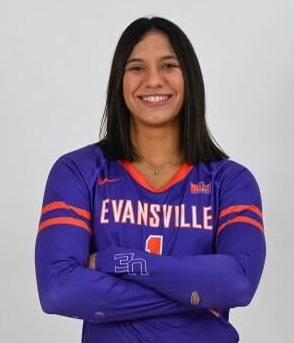

Bev Rowley

The Office of Counseling and Disability Services offers many resources to help students at UE.
The most pertinent of these services is free and confidential mental health counseling for UE students. With three mental health counselors, students can typically schedule an appointment for within two weeks. UE mental health counselors can work with a student in a variety of ways and address topics such as mood or personal issues, relationship issues, developmental issues, academic issues, trauma/assault, substance misuse, and more, according to the student’s needs. Mental health counselors are gentle and friendly, but, most importantly, they are here for you. They can also provide resources to other providers in the area if a student needs long-term or more intense therapy. Counseling services is the place to go if you feel stressed, overwhelmed, or that you are in a crisical position.
Counseling Services has also recently been improving their Instagram page, staying active with fun themes, reels, daily posts, and interactive content. Follow and share the UE Counseling Services Instagram page, @uecounselingservices, for fun facts, wellness tips, Mindful Mondays, and more.
Counseling Services hired two new counselors right before the semester started. Both of them are fun, energetic, and have been well-received by students thus far.
Lainie Krumenacker is a licensed mental health counselor associate who also joined the office over the summer. She also provided a short bio about herself and her passions to introduce herself to the UE community:
“
My name is Lainie. Originally from New York, I have been in this area for nine years and enjoy the slow pace of the Midwest. I completed my undergraduate degree in Psychology at USI and pursued my master’s degree in Clinical Psychology at Murray State. I enjoy volunteering in the community, typically as a medic for local events, but I have had the privilege to volunteer for community gardens as well. I am on the Legal Aid Society Board for Evansville and am passionate about serving vulnerable and underserved populations. Fun fact: I have a kiddo, Milo, and he is the best! In the evenings I am likely reading, cooking, or playing video games.”
Disability Services works closely with each accommodated student to ensure that the student’s needs are being met.
Mya Ice is a licensed social worker and mental health counselor who has been a wonderful addition to the office. She also runs the social media for Counseling Services, which she has kept active and engaging (with the help of the student workers in the office.) She has provided a short bio about herself to help with her introduction to the campus community:
“My name is Mya Ice, and I was born and raised here in Evansville. I went to Ball State (chirp chirp!) for my undergrad and USI for my master’s in social work. Previously, I worked as the Social Emotional Learning Director at the Boys and Girls Club of Evansville. I got married this past March, which is how I got such a cool last name! My husband and I enjoy spending time with our families and going on vacation. Fun fact: I have wanted to be a counselor or therapist since I was in seventh grade!”
Another component provided by this office is Disability Services. This team of providers works with students to establish eligibility and appropriate accommodations for students who may need them for their documented disabilities. The process for establishing services is to make a request for accommodation by making an appointment with a Disability Services provider, submit the proper documentation through the office, and then discuss and establish the services needed.
The Counseling and Disability Services office is located on the second floor of Ridgway University Center in the Student Life Suite. After going through the double-doored entrance to the suite, the office is located immediately to the left.
They are open from 8:00 a.m. to 5:00 p.m. You can make an appointment by stopping in, calling, or emailing the office. The phone number to call the office is (812)-488-2663.
Their email addresses are disabilityservices@evansville.edu and counselingservices@evansville.edu.
Tommy J Housman

Over summer break, I went on the Journey to Justice trip. It was an intense experience. This trip is led by Dr. Valerie A. Stein, Professor of Religious Studies at the University of Evansville, Director of the Ethics & Social Change Major, and Race & Ethnicity Studies Program Faculty Director at the Center for Diversity, Equity, and Inclusion. The journey takes place twice a year and is open to area youth aged 15 years and older, UE students, local middle school and high school teachers, and interested community members. I was asked to join the trip to manage social media and take photographs and videos. I eagerly accepted the opportunity, but I didn’t fully understand what I was getting into.
We began our journey right at home at the Evansville African American Museum downtown. This was a gentle way to ease everyone into the trip. I had been to the museum several times before, so I knew what to expect, but the high school students attending were already enlightened
and shocked from the start. Local historian Kelley Coures spoke to the group about civil rights in Evansville, IN, sharing sobering incidents, the rise and fall of Black communities, and introducing the students to racist policies like redlining, which still affects the city today. Most of the students were Black. One of them confided in me, saying, “It’s messed up that an old white dude knows more about my history and culture than I do.” Sorry, Kelley—I’m sure he meant that in an endearing way.

The group met back in Eykamp Hall to discuss what they had learned and what to expect after our departure in the morning. However, they didn’t realize that our first day had already set the tone for the rest of the trip: exploring, learning, and discussing as a group at the end of each day. The high school students imagined college life by spending a night in a dorm, while the adults returned home for a good night’s rest before meeting bright and early to board the bus for one of the most mentally arduous adventures I have ever experienced.
Fast forward to our arrival at the Legacy Museum in Montgomery, Alabama. The museum is housed in a former warehouse where enslaved people were forced to labor. As I entered the exhibit, I was met by a 30-foot wall of screens displaying the rough tides of the Atlantic Ocean during a storm. A flash of lightning sparked across the screen as thunderclaps echoed over the surround sound speakers. Even gusts

of wind seemed to graze my skin as I stared up at the towering waves. To my right and left were two door-sized openings inviting me in through the waves, and as I walked through, I found myself underwater.
The ambiance of the room looked, felt, and sounded like I was underwater, with muffled deep sounds and sparse shimmers reflecting off the walls and floor, mimicking refracted light through moving water. The floor was almost completely covered in sand, and the walkway was purposefully coarse and bumpy. In the sand were powerful works of art that shattered the illusion, revealing the harsh reality of American history. These art statues depicted Africans at the bottom of the ocean, buried in the sand with soulful expressions of agony, despair, and desperation. It was palpable—the lives, the bodies, the souls of those who didn’t even make it to the Americas.
variations of color, it was beautiful. Upon closer inspection, I noticed that each jar had a name on it. The Equal Justice Initiative had started collecting jars of soil from locations where Black people were killed in lynchings, and some of those jars were eloquently displayed before me. Each jar represented a person, a location. I started to count the jars across, then the rows, and then

land, much of which is covered in a strategic display of suspended columns. The columns are six feet tall and about two to three feet wide. There are 805 of them, each representing a county where a lynching took place, with the names of the victims inscribed on the corresponding column. There are more than 4,400 names. The memorial defines these incidents as racial terrorism. I cried several times on day one.
The rest of the museum was just as impactful as we traversed through time in the chronological exhibits. When I reached the Jim Crow era of history, I found myself standing in front of a striking floor-to-ceiling display of glass jars on open shelves that allowed the light to shine and reflect from all angles. There were two rows of jars, back-to-back, filled with dirt—red dirt, yellow dirt, dark rich black dirt, so many
multiplied that by two—my goodness, there were 400 jars here. I audibly gasped. But this was nothing compared to what I experienced at the National Memorial For Peace and Justice.
We all left the Legacy Museum changed, and this was just our first stop on our first day away from home. Trying to describe the impact of our next stop is difficult, which is probably why the National Memorial For Peace and Justice exists in the first place. The memorial is spread over six acres of
On day two, we entered downtown Montgomery. I’ve visited many capital cities in the Midwest, but I’ve never seen anything like this. Downtown Montgomery felt out of place, as if its significance had been artificially inflated by some unseen force. The area seemed to be constructed entirely of limestone and marble, giving it an imposing and almost surreal atmosphere. We explored downtown, visited the Rosa Parks Museum, and stood in the very spot where Rosa Parks boarded the bus and was arrested. But I want to focus on another historic landmark in Montgomery: The First White House of the Confederacy.
The First White House of the Confederacy is where the President of the Confederate States of America, Jefferson Davis, and his family resided. The house is perfectly preserved with historical items and furnishings owned
and used by Jefferson and his family. It now serves as a museum that regularly welcomes visitors. The museum receives state funding of $175,000 a year to operate. When I entered, I was greeted by a pleasant older gentleman who smothered me with Southern hospitality. I quietly shrunk into the background as the students explored and talked with the curator. I watched many visitors come and go, including young children, who also engaged with the curator. So, I just sat and listened.
It was hard to sit in this space, knowing what it represents. It was even harder to listen to the museum curator tell the group I was with, and the young children touring the home, that Jefferson Davis treated his slaves well, like family. Sitting there, silent and frustrated by the blatant state-funded whitewashing of history, was more than I could bear. I have no doubt my skin was hot to the touch—I was furiously on fire. Finally, I abruptly stood up and stormed outside, where I finally exhaled. I was completely unprepared for this experience, and I was equally unprepared for the juxtaposition of our next stop: Selma, Alabama.
The Edmund Pettus Bridge. I had seen photos and videos in movies and documentaries, but it’s a real place, a real bridge in Selma, Alabama. It is still used as a thoroughfare over the Alabama River, as if nothing ever happened. Entering Selma was bleak. I had never seen so many abandoned homes and businesses in one area, but when we approached this historic
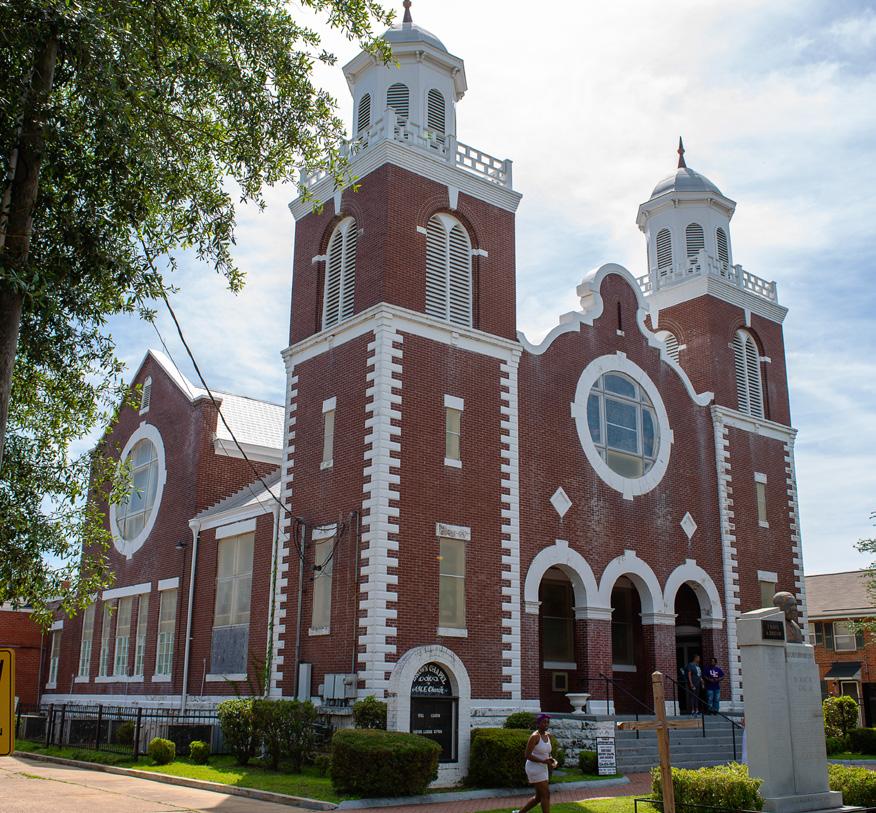
landmark, I thought I would see a more vibrant neighborhood. I did not. We crossed the bridge and drove to the Brown Chapel A.M.E. Church, where Martin Luther King Jr. met with local leaders to plan their march to Montgomery to fight for the right to vote. The church where they started the march on Bloody Sunday and where they began the 54-mile march to Montgomery. Even the church was experiencing hardship. The church was conducting services in a small room because their sanctuary needed $4.5 million in repairs and was unsafe to gather in for services. The Brown Chapel sits in need, as if nothing ever happened.
The group marched from the Brown Chapel to the Edmund Pettus Bridge to cross to the Memorial Park and visit the National Voting Rights Museum. I raced ahead on the bus to capture photos as the group walked across the bridge. The whole situation was surreal. I didn’t get to fully take it in because I was trying
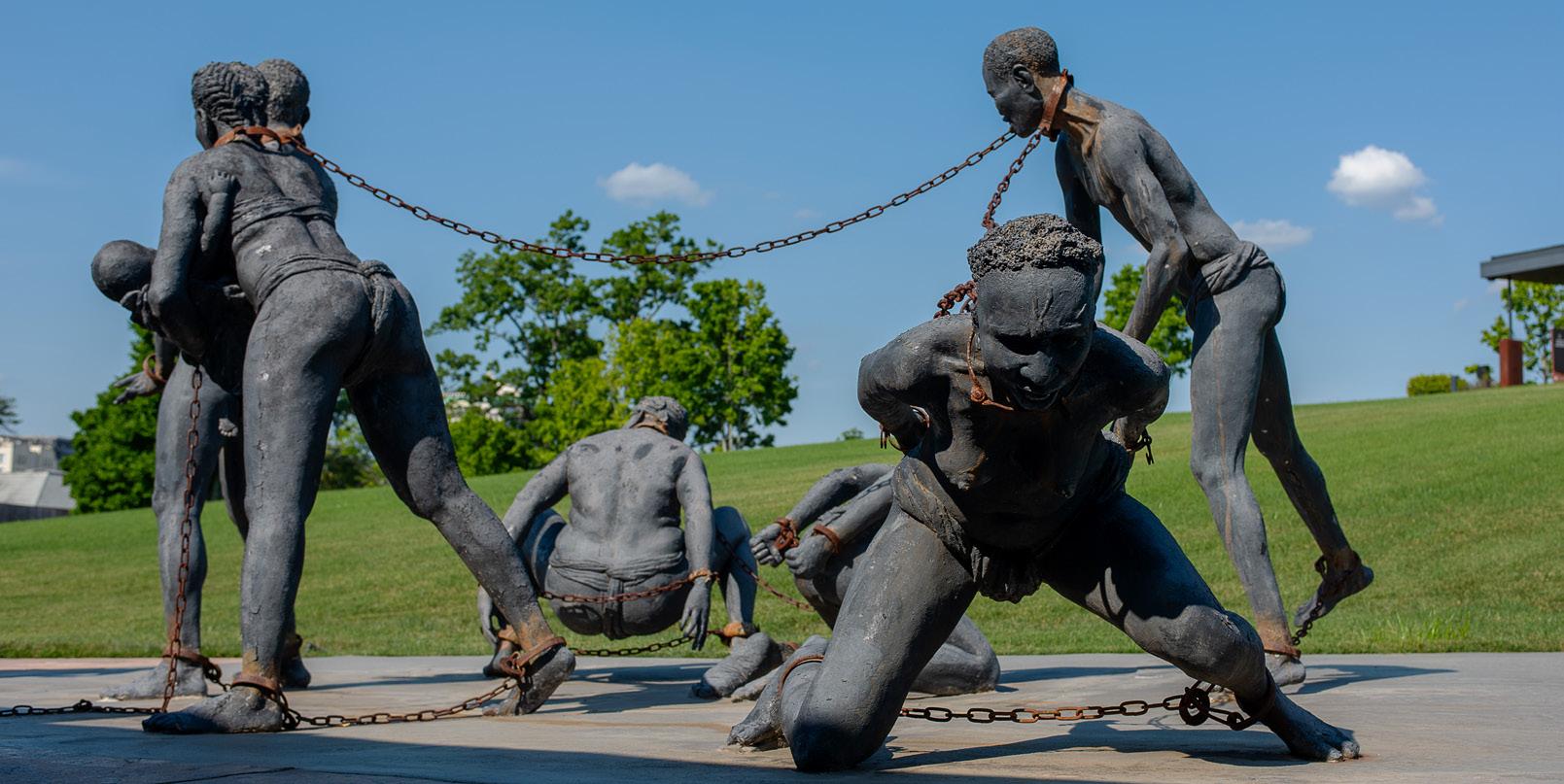
to capture the experience of others, but there I was on this historic bridge with cars racing by and people walking to and from wherever they were going, as I’m sure they do regularly. But for some reason, I felt privileged to be there. Even though I was trying to capture the essence of people attempting to understand something they couldn’t possibly grasp, I couldn’t help but feel incredibly honored to be on a bridge where people were incredibly brave and incredibly cruel over 50 years ago. Today, people cross it every day just to get where they are going. I still cannot articulate it adequately.
The National Voting Rights Museum is located just over the Edmund Pettus Bridge, and it looks like it’s in an old print shop or small shipping warehouse. It doesn’t appear to be a museum, despite the lettering on the awning that says “The National Voting Rights Museum.” The museum houses photographic galleries of Bloody Sunday and the Selma-Montgomery March, interesting artifacts like plaster footprints of the civil rights foot soldiers, thousands of audio recordings from people who marched on Bloody Sunday and to Montgomery, and much more rich history deserving of respect and preservation. The curator was an adolescent at the time who was there on Bloody Sunday. I felt small in his presence, like everything hard I ever experienced was insignificant. The museum was musty, with cobwebs in the corners. The National Voting Rights Museum of Selma, Alabama, receives zero state funding.
After leaving Selma, we traveled on to Birmingham to visit Ingram Park, the Birmingham Civil Rights Institute, and the 16th Street Baptist Church. The park was amazing, filled with introspective, thought-provoking art—almost like an extension of the Civil Rights Institute. The Civil Rights Institute was filled with pop culture, presented in chronological order, as we again traveled through time, attempting to understand what it was like to live during the times of slavery, segregation, and when Black Americans fought for the right to vote. The 16th Street Baptist Church was particularly challenging to visit.

Just before 11 o’clock on September 15, 1963, the congregation of the 16th Street Baptist Church was knocked to the ground as a bomb exploded under the steps of the church. In the basement, four little girls were killed—14-year-olds Addie Mae Collins, Denise McNair, Carole Robertson, and 11-year-old Cynthia Wesley. Addie’s sister Sarah survived but lost her right eye. In the church, they shared their rich history and stories from the past in a small immersive theater. Witnessing the location where the children were murdered and where the bomb was placed was overwhelming. That is all I can say about that.

We left Birmingham and headed to Memphis, Tennessee, to visit The National Civil Rights Museum at the Lorraine Hotel. The outside of the museum is the preserved facade of the Lorraine Hotel, where Martin Luther King Jr. was assassinated on the balcony. The National Civil Rights Museum is another chronological trip through time, but in this case, it leads to the very room where Martin Luther King Jr. stayed before he was shot on the balcony outside his room. Everything is perfectly preserved, frozen in time. Yet another surreal experience that finally drives home the notion that this was a fight. It was a fight from the first boat across the Atlantic to August 6, 1965, when the Voting Rights Act was signed into law, a few months after the Selma-Montgomery march. And yet, it is still a fight.
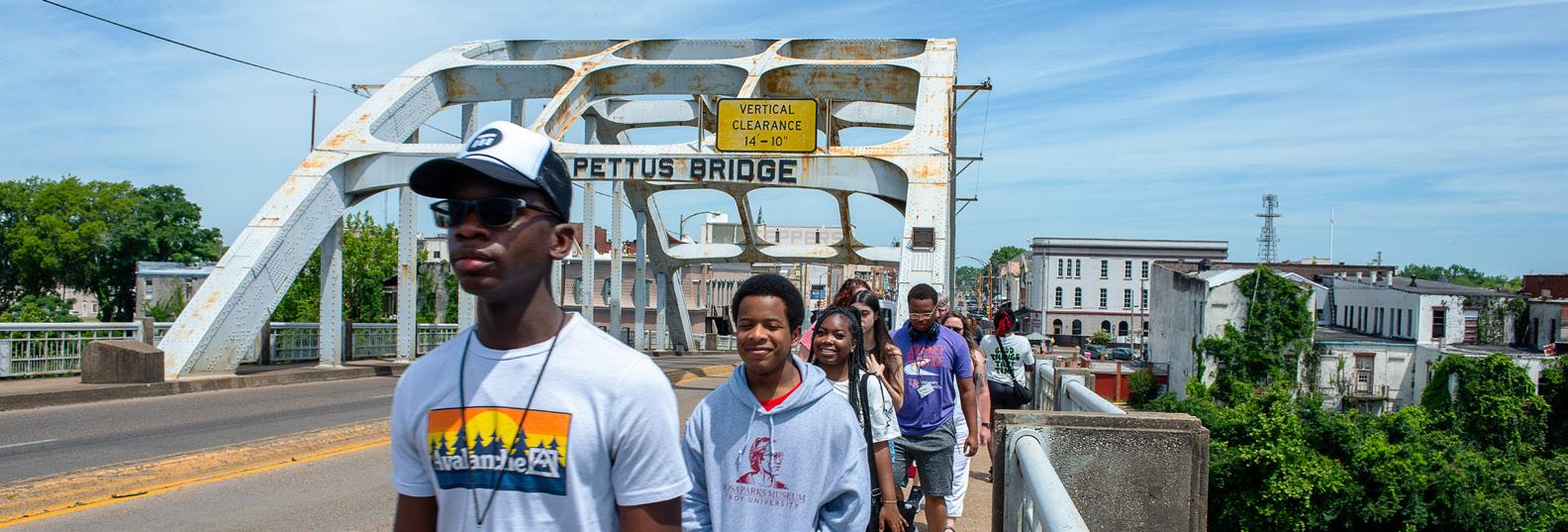
The last stop of our trip was in Louisville, Kentucky, where a man placed 400-yearold shackles and chains on my wrists. We were at the Roots 101 African American Museum in Louisville, sitting together and listening to the curator’s orientation. He wanted to place the shackles on everyone’s wrists before touring the exhibit. I sat at the back to take photos, but once this part of the program started, I decided it would be too intrusive to capture.
I watched as the students lined up for him to place the shackles on each of them, one at a time. He held them up for the students to place their hands through. Once they had their hands through the shackles, he would pause, look them in the eye, and say, “Welcome to America,” as he dropped the chains onto their wrists, and they bore the full weight. The chain visibly pulled them downward, arching their backs to compensate for the burden of the chains. I’ve never seen a group more emotionally moved. The physical weight of our history was almost too much. One student asked, “Is this mandatory?” The curator replied, “No, it’s not mandatory, but our ancestors didn’t have a choice.” The student instantly reconsidered his hesitation and succumbed to the experience.
As I sat in the back of the room, watching each of these students feel centuries’ worth of exploitation in one moment, I couldn’t help but cry. When it was my turn, I feared I would completely break down and sob. He placed the shackles on my wrists just as I had watched him do 20 times before, and still, I was unprepared. “Welcome to America,” he said as he dropped the shackles on my wrists. The weight pulled me forward just as it did the teenagers. I teared up, but I didn’t lose it as I thought I would. I gulped down
an audible swallow that landed like a brick in my gut.
After bearing the weight for a moment, he would ask each of us how we felt. The answers varied, but mine was short. At that moment, the only words I could conjure were, “It’s a lot.” Even though I had only worn the shackles for less than a minute, 15 to 20 minutes later, I could still feel them on my wrists. As I sit here writing, I try to remember how they felt on my skin, and I cannot seem to relive that physical experience, but emotionally, the weight is still enormous.
Now, I could go on and write about my takeaway from this experience, and that would probably take another 2,000 words to convey, but instead, I will share the simplified version of what the students said more and more frequently as we engaged in discussion at the end of each day. They said they were going to vote. “People fought and died for me to have the right to vote, and I am not going to waste it. I am going to vote in every election, and I am going to spread this message to make sure everyone knows what it took for us to have this right. We must vote!”

OnApril 20th, 1999, two teenagers walked into Columbine High School, shot and killed thirteen people, and committed suicide. This tragedy increased America’s awareness of gun violence, mental illness, and the need for gun control. America said, Never again.
Seven years later, on April 16th, 2007, on the campus of Virginia Tech, a man shot and killed 32 students and professors. This massacre has remained the deadliest school shooting in American history. Never again.
On December 14th, 2012, the victims were at Sandy Hook Elementary School. Twenty children, aged 6 to 7, and six adults were shot and killed. Never again.
In 2018, on Valentine’s Day, 17 people were shot and killed at Parkland High School in Miami. There were nationwide walkouts in remembrance of the victims, and the urge for more substantial gun control was once again awakened in Americans. Never again.
Two years ago, on May 24th, 2022, at Robb Elementary School in Uvalde, Texas, a former student shot and killed 21 people. Never... again?
This year, on September 4th, 2024, four people were shot and killed at Apalachee High School. And as of
September 13th, according to CNN, there have been at least 49 school shootings in America. How can we as a country continue to say Never again, if nothing changes? Children have been

dying in schools due to unforgivable shootings at a rapid pace over the past decade, and lawmakers have done little to change this trajectory. This data does not include the numerous other mass shootings that happen on a near-daily basis in America—the Pulse Nightclub shooting, as an example, that killed 49 people in 2016.
According to a study done by the Pew Research Center in 2024, 58% of American adults surveyed favor stricter gun laws. 61% of them say that it is too easy for people to obtain a gun legally, and slightly less than half (49%) say that the increasing number of firearms in the country is a significant and harmful problem. The American population’s relationship with guns is almost typically split between those who identify in support of Democrats and Republicans. The only issues agreed upon by those of both parties are preventing individuals with mental illnesses from purchasing guns and increasing the minimum age for purchasing guns to 21 years old. What the party divide tends to disagree on the most involves assaultstyle weapons and guns in schools. 85% of Democrats support the ban on assault-style weapons, while only 57% of Republicans do. Thinking specifically about guns in schools, a majority of teachers surveyed (59%) responded that they worry about a shooting happening at their school, and 18% were extremely worried. Out of parents, 32% said they were extremely worried about a shooting at their child’s school, and 37% said they were somewhat concerned. In response to this, 74% of Republicans surveyed supported the idea of teachers carrying guns in school to battle violence. But the critical question arises of whether America’s gun problem will be solved with more guns.
After the increase in assassinations of political figures in the 1960s, the Gun Control Act of 1968 (GCA Act) was enacted, which aimed to regulate the firearms industry and ownership. Ronald Reagan’s administration passed the Firearm Owners Protection Act in 1986, which extended protections for gun owners. But, after the assassination attempt against Reagan, the administration amended the GCA Act with the Brady Law in 1993, which added the requirement for background checks when buying a gun. This was amended again in 1994 by the Violence Against Women Act, which strengthened bans against domestic abusers from purchasing firearms. The next significant change to gun laws happened after the Stockton, California schoolyard shooting in 1994. After 32

children were shot and five killed, Bill Clinton signed the Violent Crime Control and Law Enforcement Act, which included a ban on assault weapons and ammunition magazines holding over ten rounds. This ban expired after ten years.
In response to the Sandy Hook Elementary School shooting, former President Barack Obama announced a plan to reduce gun violence in America, but no federal legislation was passed. During Donald Trump’s presidency, his administration and the Department of Justice banned bump stocks, which are used to make semi-automatic weapons fully automatic. Soon after, the conservative-leaning Supreme Court lifted the ban, claiming that it violated the Second Amendment. President Joe Biden signed the Bipartisan Safer Communities Act into law in 2022. This law expanded background checks for individuals under 21, put $15 billion into funding for school security and mental health programs, banned convicted domestic abusers from owning guns, and encouraged states to enact red flag laws, which allow people to apply to a judge to take away an individual’s gun if they are deemed a risk.
This election season, gun control has not been at the forefront of conversations as much as other topics, like immigration and abortion. Former President Donald Trump made his stance on guns clear during his presidency. He is strongly supported by the National Rifle Association (NRA) and has continued that relationship into his current campaign. He spoke in front of a crowd of NRA members, saying
that “no one will lay a finger on your firearms” if he should return to the White House. He even claimed that he was “the best friend gun owners have ever had in the White House,” and would strictly protect the rights of gun owners.
Vice President Kamala Harris and her running mate Tim Walz are proud gun owners and have made it clear to the public that they are not going to take away anyone’s guns. In a recent panel with Oprah Winfrey, Harris said she supports a ban on assault weapons, more thorough background checks, and red flag laws. Tim Walz shares similar sentiments, saying he believes “in the Second Amendment” but also believes “that our first responsibility is to keep our kids safe.”
Gun violence is prevalent in American society, and our country remains an outlier from others in the amount of gun deaths every year. People kill people every day, but having access to assaultstyle weapons makes it easier for them to do so. How are we going to protect our children while they receive their education? How will we know if we are safe when we go out? During this and every election season, it is vital to keep in mind these statistics and the actual prevalence of gun violence.

Lucas Jablonski




This year’s general election may be one of the most important days of the year for our country. Voters will decide which presidential candidate, and by extension political party, will lead the country for the next four years—a decision which could change many aspects of our lives as students. However, the race that has arguably greater importance for our representation is the election for Congress. Each state is divided into districts based on population size, and each district votes for a representative that will advocate for their opinions in the nation’s capital. Evansville is in Indiana’s eighth congressional district and has three nominees for the position: Republican Mark Messmer, Libertarian K. Richard Fitzlaff, and Democrat Erik Hurt. The candidate that receives a majority of votes will act as the voice for over 700,000 people in the district.
Erik Hurt is the Democrat on the ticket this year. He began his college career studying political science at UE then transitioning to history at Indiana University where he grew an interest in the field—he is an Evansville alumnus. After moving to Florida for a few years to take a less active role in politics, he viewed the government’s response to the COVID pandemic and the Trump presidency as calls to action. He and his wife moved back to Evansville so that he could pursue a political position, and in May of this year he won the Democrat primary and was named the party’s candidate.
On September 17, I had the opportunity to sit down with Hurt to discuss his positions on government spending, student welfare, and equal representation. Hurt appeared wellspoken, informed, and passionate about his stances:
What issues have you seen that have prompted your desire to promote economic equity?
“If you look at Indiana in terms of wage growth, we are near the bottom in the country, and we’re 47th out of 50 in terms of actual wage growth. When you look at the way our system is structured, it doesn’t favor increasing those wages for working class people… and back in the 60s and 70s, the average CEO made 15 times what the average worker at their company made where now it’s about three to four hundred times. We’re seeing that not just in Indiana, not just in Florida, it’s a national thing. If we want to invest in our people and making sure that they have the best opportunities, we have to rewrite these tax codes.”
How do you plan to protect the students of the future from destructive debt?
“What we did before where college was much more affordable, where you could work your way through school, it was big federal investment into public universities. That obviously looks different for a private university like UE, but when you are having that kind of cheaper public option, it can force private universities hands to lower their tuition as well. (…) We need to make sure that the tuition costs reflect what people are actually making (…) and I believe we should remove the interest on federal student loans. We have to treat that as an investment into our students. That’s what we should say about putting money into our public schools and into our institutions: it’s not a cost, it is an investment.”
What specific measures will you support that assist marginalized communities in higher education?
“You have to look at the history of systemic racism and marginalization in this country. When you look back at those investments in the 40s and 50s, one of the most significant investments we made in this country was the GI bill, which, after World War II, all these soldiers had the opportunity to get very cheap loans and education. They were able to get homes, they were
able to get educations, they were able to get jobs, and they were able to build generational wealth. Those benefits were denied to people of color, and those groups were not able to benefit from those programs, and we’re still feeling those ramifications (…) whether it was redlining in African American communities, aggressive policing towards people of different ethnicities— (…) you have to take it into consideration. (…) There was a big pull in the Ivy League to restructure qualifications and those affirmative action standards and requirements (…) and we need to make sure that those guardrails are in place to protect marginalized people and to get them into places that they’ve been historically denied.”
What is Senate Bill 202, and why should it worry college students?
“[The bill] essentially creates an environment where teachers and students are limited to what they can talk about and how they can talk about it, particularly professors. If they are believed to show a political bias they can be reported on and retaliated against, and, even if they’re tenured, can lose their position and lose their job. This has been directly targeted towards more left-wing leaning ideologies. It can be something like talking about climate change in a science class. It could be talking about Native American genocide in the United States. It could be a piece of literature that deals with certain themes whether it’s oppression, marginalization, or LGBTQ themes. Professors can find themselves in a position where they may not be able to talk about this or teach about this as effectively or thoroughly as they should. We have to make sure that universities are places where difficult subject matter is being navigated, because if we’re not exploring difficult themes and difficult subjects, what are we doing?”
What would you tell students who say their votes don’t matter?
“It can be tough because if you feel like you’re not being spoken to, if you feel like it’s no different either way, then what is the reason to get out there and vote? I understand the frustration with
the options, with the process, but what’s incredibly important for students to recognize is the amount of influence they can have on elections, whether it’s at the federal or the local level. What I say down here in Evansville, particularly for something local, is that [the current mayor] won her mayoral election with less than 9,000, and that is less than the student population of USI, let alone UE and Ivy Tech. Let alone the high schoolers who are 18 and can vote, let alone the people who aren’t in school who are that age. There’s an enormous amount of influence that you can have if you’re willing to engage and to activate (…) I think there are a lot of people in those positions of power who are banking on your disinterest and your disenfranchisement and your apathy, and if you’re willing to get engaged, you can overcome that, and you can overcome those individuals and put different people in power, and reshape the way your community looks and is organized.”
Erik Hurt is a passionate and knowledgeable candidate who began his journey at the University of Evansville—he’s now back in his home town with a vision for the future of Indiana. Whether you agree with his positions or not, voting as students in this election is imperative. We must make our voices heard and have representation in government in every way we can. The general election takes place on Tuesday, November fifth, and I strongly implore the students of UE to be there at the polls.

Madchen Fox
For many of the students here at UE, this will be the first presidential election in which we’ll be eligible to vote. This election is far from a normal one, though the concept of “normal” elections has been completely thrown out the window in recent years. Bipartisanship is increasingly becoming a false ideal. It’s important to note that bipartisanship has been on the decline for years now. It didn’t start with Trump, and it won’t end with his absence. Since the 2016 election between Trump and Clinton, there has been a noticeable decline in the ability of either party to have a meaningful discussion. I am not solely blaming Donald Trump for this, but I don’t think it’s unfair to say that his immature style of name-calling and insult-slinging has contributed to this situation. Now, people from either party are unable to have civil debates. In my own family, we’ve had to agree not to bring up politics at all just to avoid unnecessary arguments. Now, we’re witnessing Donald Trump’s third presidential campaign, and these issues aren’t getting any better. We’re at the point where we’ve seen two attempted assassinations of a presidential candidate, and while those people were from the same party as Trump, it’s still wildly disturbing to witness. This is not something Americans should be proud of. It’s unnerving, and frankly, it’s embarrassing that this is what we’ve come to as a country.
I’m not trying to glorify Kamala Harris either. There are plenty of strange things she has done that I feel Democrats and Republicans can view similarly. Kamala Harris taking documents from the White House is undeniably bad. It was horrendous watching Kamala Harris mock a disabled reporter on stage. It was sickening to see Kamala Harris say that the only people who could
stop Donald Trump from appointing his judges were Second Amendment supporters, heavily insinuating the use of gun violence against him. But none of this is true. Kamala Harris didn’t say or do ANY of this. Neither did Tim Walz. Donald Trump and JD Vance did. Donald Trump stole federal documents, which were found at his Mar-A-Lago estate. Donald Trump mocked the disabled reporter on stage in front of thousands of his supporters. Donald Trump insinuated using gun violence against Hillary Clinton. JD Vance defended creating false stories about Haitian immigrants eating people’s pets. My point here is that Trump-supporting Republicans would find these issues appalling if Democrats did them, but they excuse this kind of behavior from him. This level of blind support for a politician, regardless of what they may say or do, is irresponsible and scary. Not only that, but it borders on being cult like.
I am not throwing that word around lightly either. I believe that the Republican Party deserves a better candidate than this guy. It’s unsettling that he has so much support from people who would be so quick to shut this behavior down if it weren’t attached to Donald Trump’s name. Donald Trump lies to his supporters again and again, but they almost seem to worship him based on “facts” that aren’t true. The unwavering devotion to a man who would rather line the pockets of his rich friends by encouraging the exploitation of the average American is alarming. I hope in the next couple of years, as a country, we can move past this festering hate. But I don’t know if we’ll actually be able to. I’m worried Donald Trump is going to leave a lasting stain on America if he hasn’t already.
If Kamala Harris had 34 felony counts against her, as Donald Trump does, it would be unforgivable in the eyes of Trump-supporting Republicans. If Kamala Harris had over 20 people come forward and say they were sexually assaulted by her, it would be over for her. If Tim Walz ever did drag, as JD Vance has done, Trump-supporting Republicans would lump him into the same category as they have placed drag queens. They would be quick to paint him as “pedophilic” and accuse him of grooming children, which they claim drag queens are doing.
Yet, for some reason, they aren’t willing to put JD Vance in the same category. If Kamala Harris had many pictures associating her closely with Jeffrey Epstein, as Trump has, would Trump supporters hold her more accountable than they hold Trump?
At the end of the day, if young people go out and vote, I couldn’t care less who they vote for. I won’t pretend I’m a nonpartisan writer, but even I, someone with far-left opinions, have my own qualms with Kamala Harris. I dislike her stances on the Israel-Palestine conflict. I dislike her stances on fracking. While she represents the party that is closest to me, I still don’t idolize her as some hero of mine. She’s a politician. I can recognize that. I just ask Trump supporters to consider viewing Donald Trump through the same lens with which they view Kamala Harris. Voting for either candidate is purely up to one’s own discretion, but don’t act like you don’t understand what you may be endorsing.
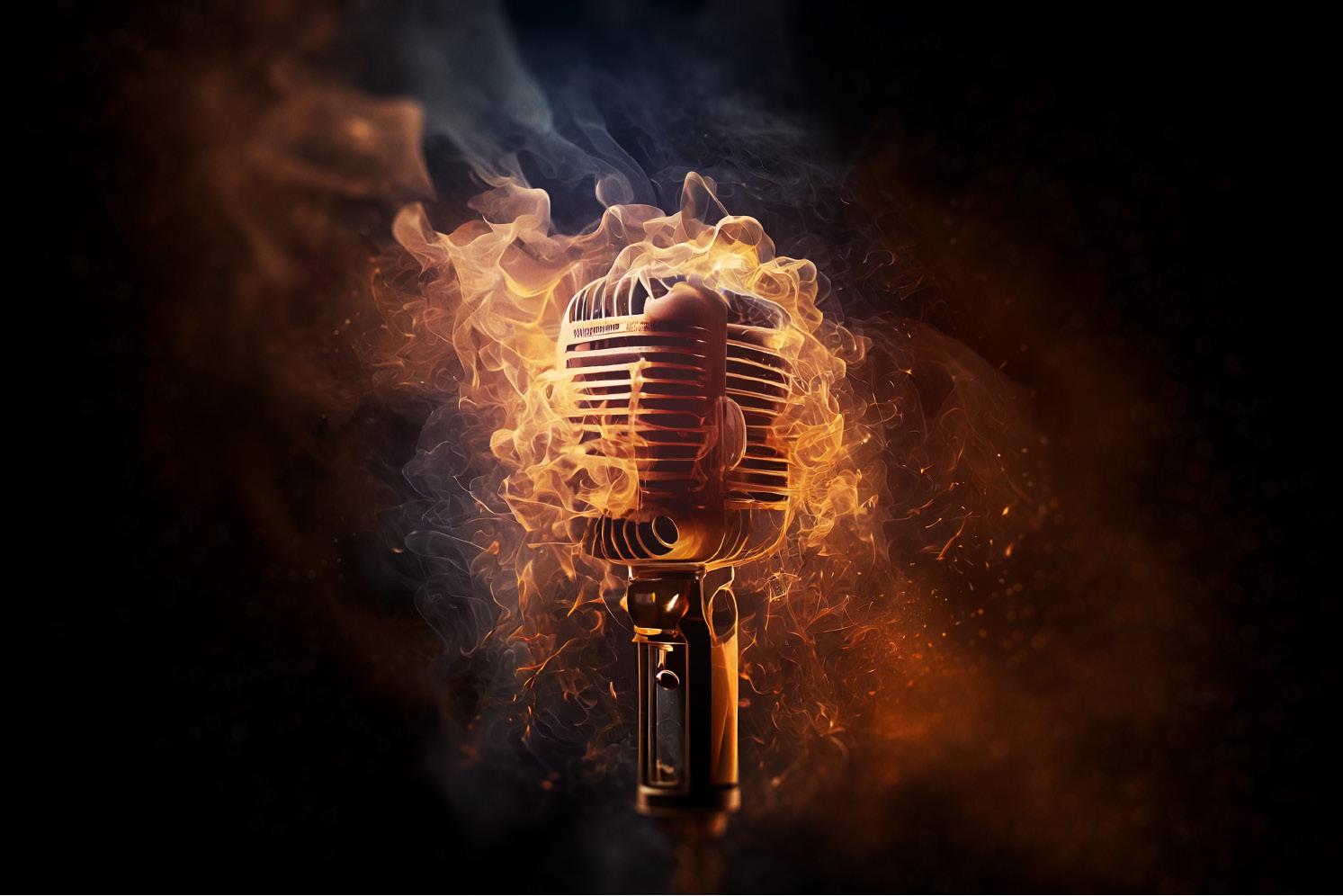





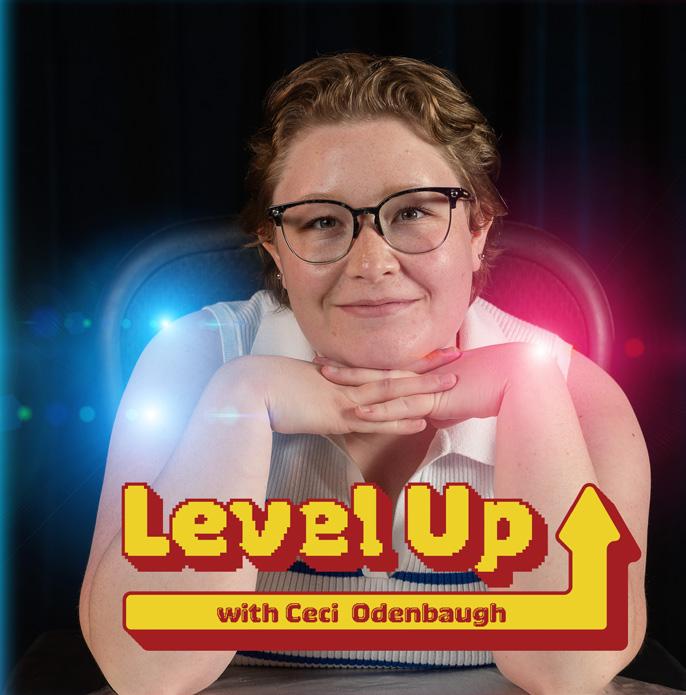

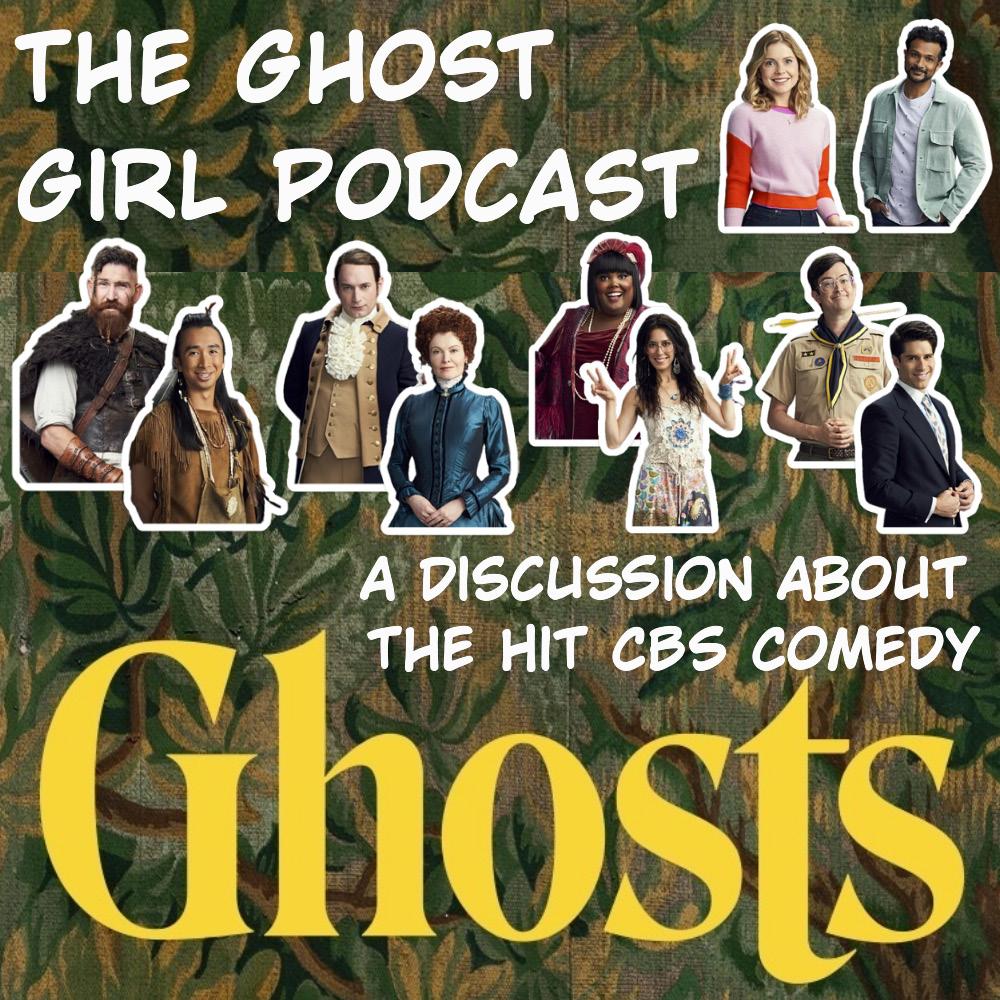
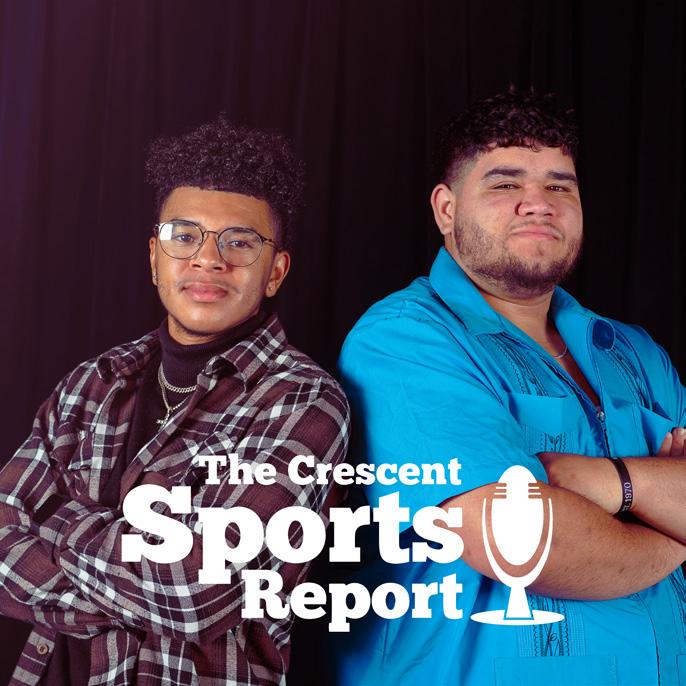
One of the more classic titles on the list, Dead by Daylight is an online multiplayer horror game where four players try to survive a savage killer played by a fifth player. The survivors must work together to find their way out without losing their companions, or their own lives, to the masked serial killer who decided to pay a visit one terrible night.
$20.00
Platforms:
Windows, Nintendo Switch, Android, iOS, Stadia, Xbox One, Xbox Series X/S, PS4, PS5, Steam Crossplay supported.


LIMBO is a single player platformer puzzle game with a heavily eerie atmosphere. Nothing explicitly screams in your face, but the overwhelming sense of dread that hangs over you is terrifying enough. All scary things stem from the fear of the unknown, and being left in the dark the whole time certainly isn’t helping to curb that fear.
$10.00
Platforms: Google Play, App Store, Android, Nintendo Switch, Epic Games, Steam, PS3, PS4,


Myia Payne and Abbey Kyle
Lethal Company gained a ton of popularity last November, and for good reason. This is another 1-4 player co-op game where you are an employee traveling to abandoned moons, gathering materials from industrial wastelands to meet your monetary quota for The Company. Many creatures still call these abandoned places home though. Be cautious, but you’d best fulfill your quota in time.
$10.00
Platforms: Android, Windows, Steam Crossplay not Supported.
Phasmophobia is a co-op or single player psychological horror game. You and up to three other friends enter haunted buildings, using ghost hunting equipment to narrow down the type of ghost that haunts the place. Be careful not to overstay your welcome, though…
$20.00
Platforms: PS5, Xbox series X/S, Windows, GeForce Now, Steam Crossplay Supported.


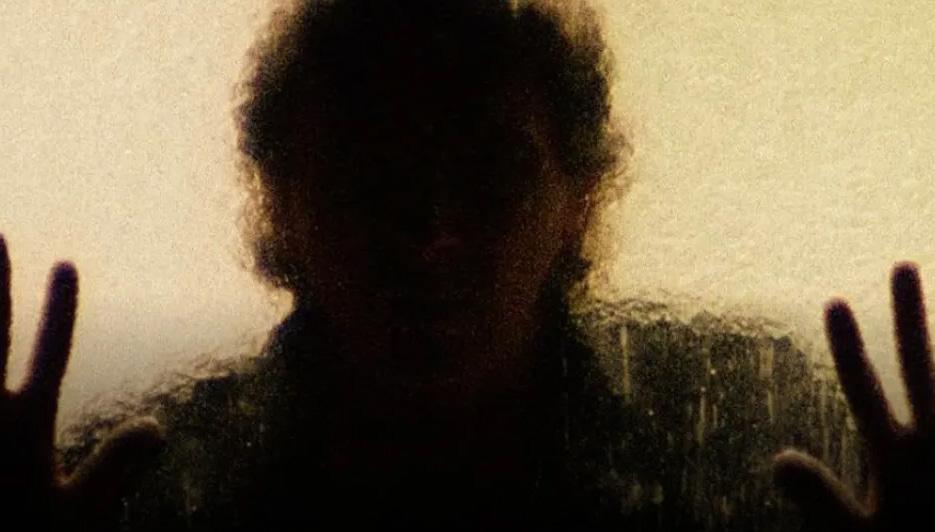
[R] Horror/Action
A man, his estranged daughter and other passengers become trapped on a speeding train during a zombie outbreak in South Korea. They are attempting to travel to the only town that’s still safe from the outbreak, but encounter terrifying, maneating obstacles along the way.
[R] Horror/Thriller
A virus spreads throughout the city, causing the infected to become vicious hunters. Iris and her daughter become caught in the massacre, discovering 32-second periods of calm before each attack.

[R] Horror/Drama
After waking up in an apartment the night after a raging party, Sam comes face to face with his new reality: an army of zombies has invaded the streets of Paris, and he is one of the lone survivors. Petrified with fear, he barricades himself inside the building to survive. He wonders how long he can last in silence and solitude, and the answer comes when he learns that he’s not all alone after all.

[R] Horror/Comedy
Shaun is a 30-something loser with a dull, easy existence. When he’s not working at the electronics store, he lives with his slovenly best friend, Ed, in a small flat on the outskirts of London. The town becomes overrun with zombies for some unknown reason, and it becomes Shaun’s job to fend off these zombies from those he cares about.

[R] Horror
Late-night TV host Angela and her cinematographer are following the fire service on a call to an apartment building, but the Spanish police seal off the building after an old woman is infected by a virus which gives her inhuman strength.
[R] Horror/Sci-Fi
If they hear you, they hunt you. A family must live in silence to avoid mysterious creatures that hunt by sound. Knowing that even the slightest whisper or footstep can bring death, Evelyn and Lee are determined to find a way to protect their children while desperately searching for a way to fight back. Though these are aliens instead of zombies, the premise is close.



Do Americans actually wear those “I <3 London Shirts?
You collect magnets from the towns? That’s so American!
Why are you in Peterborough of all places?
You had Maccas yet?

Where are you from? Oh, is it that by Chicago, New York, Florida, LA?
Do you have a cowboy hat?
You live in a Castle for school?!
Do you have an umbrella?
Where’s that?
You’re from the midwest? Like Texas!!
Your accent is so funny!
Can I get a picture?
How’s it feel to drink at 18?
In’nit something?
WHHAATTTT!!!
KFC is banga here! Utter shite’ in the states huh?
Tap water, yeah yeah.
Smaller portions, actual human portions not HUMONGOUS ones!
Your large is our medium! How are you all not obese!!
Try this! And this! Oh, and here's this!
You live in a castle! I’m British and I never have!
Take me back with you!
Yous lot Amercian? I can tell by the accent!

Must Try’s
McDonalds

Yes, yes, I know “but it’s in the US”, but the menu is better and more expensive here, others here promised to not eat it and yet they did by the end of week, so just give in, join the dark side. Nando’s
Who doesn’t enjoy chicken?
American Candy Store
Even their American candy is not all American.
Spoons

The Pizza House, Peterborough
The food is immaculate! The owner is a very pleasant Italian man who will teach you how to say the dishes. Oblio’s Bistro, Grantham
The atmosphere is welcoming, very quaint and cute, and the “chips” are my obsession.
Miss Korea, Nottingham
The food is immaculate, very welcoming, and friendly atmosphere.
Nando’s, London
How can you not try Nando’s while abroad!
Warner Bro’s Harry Potter Studio Tour
My Potter-Head was in a spin being here. Very alluring and will make your inner nerd very happy, I know mine was!
Lincoln
It embodies what “England” is. It gives the Harry Potter and old Europen style. A great place to spend the day or weekend. Chinatown, London
Appears empty during the day so be sure to go check them out in the afternoon to really experience it!
Peak District Hiking
The nature surrounding the Peak District is worth the climb, wonderful spot for photos and to see the foliage.
Camden Market
Birria Tacos from Meathead are to die for! Authentic and so much to see!
Bourough Market
The chocolate covered strawberries are all I need!
Portobello Market
Lebanese Shawarma are why I went, thrifting on Saturday’s are why I stayed!
Lapid Art, Lincoln
So many crystals!! Go here for your aesthetic and spirtual needs, or if you want a cute crystal statue of an animal!
A cheap but good bar found in many towns, including Grantham, be careful though or you’ll find yourself crawling up the manor stairs at 3am!
Poundland
Interesting name for a dollar tree...
T.K.Maxx
Tesco
Ah yes, “Walmart”
Boots
The UK CVS
BOBA
Any Any and all Bakeries


About 1-2 months in and we’re already planning our trips and ignoring our class work. When planning trips remember, you only get two unexcused absences as that’s how many days a week you have the class, if you make friends with the professor they may give you more. School work however, you see no evil then there is no evil, right? Don’t let your assignments on blackboard slip, majority of the professors here have never used blackboard or do not care, so the assignment’s will be on the Syllabus, meaning you do not get notifications for due dates! Most classes, MOST, only have 3-5 essays and a couple presentations, you are responsible after the first week to remember this. A few unlucky souls do get classes with many more essays, quizzes, and all the tests/finals.
Ask for tap water.
Split taxis.
Get the 16-25 Rail card. Carry a set amount of money. Have a limit on your cards. Travel with friends.
The weather recently has been going back to its usual, usual being rain. For those of us who did not have jackets, umbrellas (brelly’s), or coats we used nature as our hideaway, aka we ran and hid under trees till it passed, I know, very brave. Even if it is raining, don’t let that stop you from walking around though, it’s only water and I promise you won’t melt. Go outside, walk around the towns, villages, woods, the gardens, and even just the conservatory on campus. There is sunshine the majority of the time but even then, the worst weather here still has beautiful scenery. While you walk around, do watch out for your phone when taking photos! The thievery is real here, always hold your phone or have it in a bag, because perhaps you’ll be the next viral clip on YouTube.
By Madison Adams
Pegasus (Gryffindor): 241
Newton (Slytherin): 198
Gregory (Ravenclaw): 193
Mercia (Hufflepuff): 164
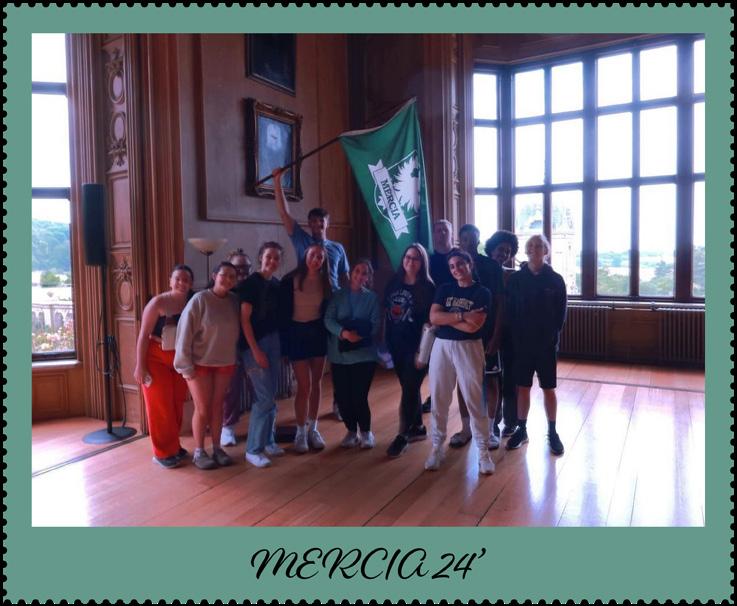
WEEK 1:
Scavenger Hunt – Pegasus Volleyball – Pegasus Basketball – Gregory
WEEK 2:
House Quiz – Pegasus Weekend Checkout – Newton London Scavenger Hunt – Newton
WEEK 3:
British Sports Day – Newton Weekend Checkout – Gregory
Photo of the Week – Gregory
WEEK 4:
Lip Sync Battle – Newton Weekend Checkout -
Photo of the WeekAbsentee Voting Registration -
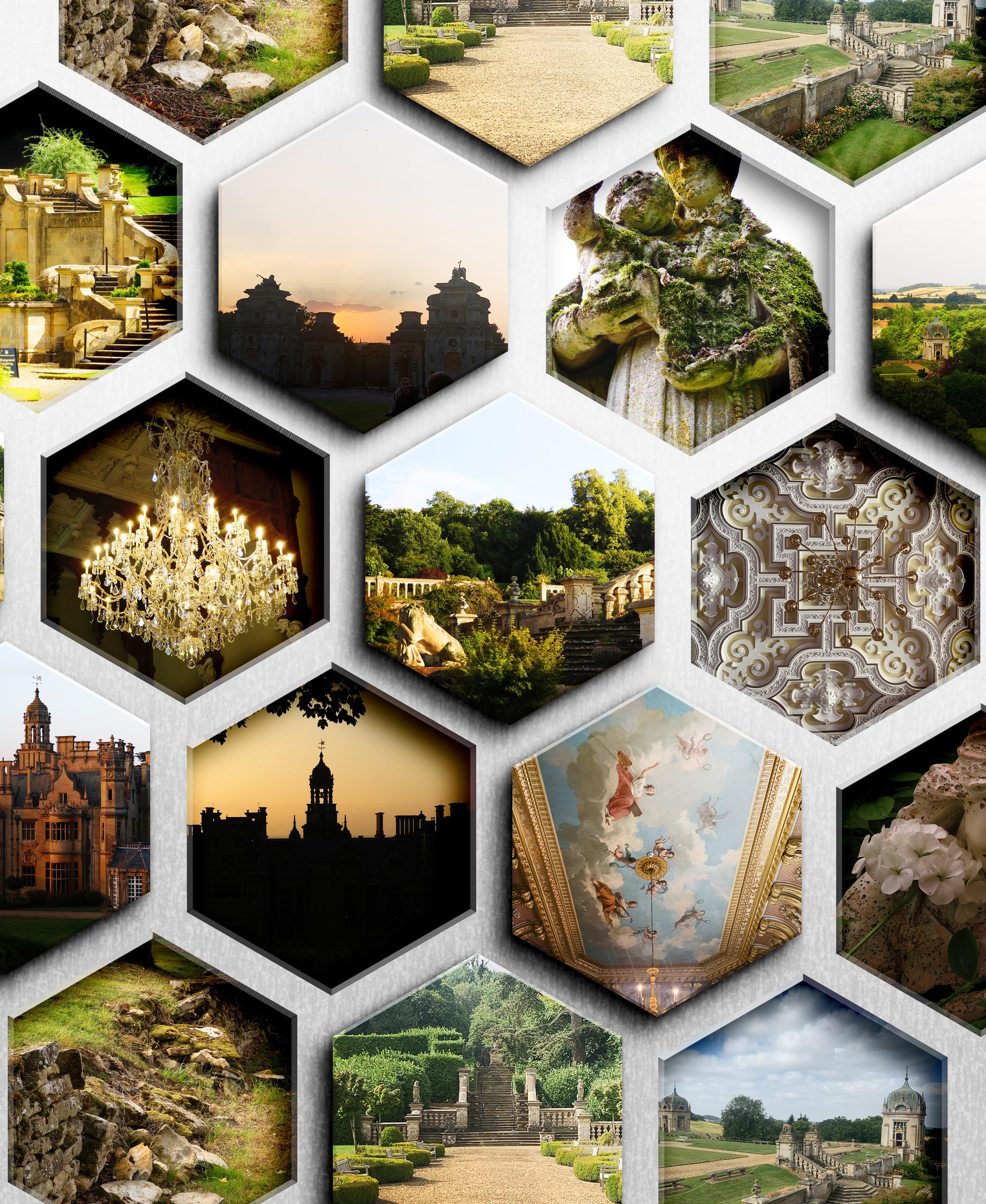
They exited through the giant oak doors of the refectory on a Wednesday night. Its long wooden tables slowly emptied as dinner closed and the clamor was dying down. At a corner table, the professors and families lingered in the warm atmosphere.
“Man, that roast was so good,”
“I know bro, always my favorite” Replied AP
“Hey Ian, are you coming with us to the social club?”
“I really can’t go tonight guys, Dr. Bujak said I needed to change my paper”
The trio reached the stairs and began the long walk up.
“Dude don’t be a nerd c’mon let’s go down”
“Nope no way I’m going, have a good time though. I’m pumped for tomorrow” Ian replied
AP said “It’s going to be insane, I can’t wait to be back”
“The sun is going to feel so nice. Three nights away is just what I need.”
Gabriel Long
We all agreed that the weekend was going to be the best yet, aside from our respective spring break trips. The plans for Albania had been in the works for 2 months and we had put together the perfect trip. Leaving at 6 pm from Stansted we’d then arrive in Tirana where I’d pick up the manual Ford Fiesta. Our hotel that night would be a high-rise apartment and then we’d be staying at a resort on the Mediterranean.
AP and I made our way down the stairs and out of the manor when he turned to me and told me that he needed his jacket. I didn’t think it was that cold but turned to go back up with him.
“Nah bro just head that way”
“I don’t want to walk all the way there alone, I’ll just wait”
“NO, just go”
“Okay man, whatever you say”
Briskly walking, I managed to catch up to some other guys headed to the Social Club. The rest of the walk was a bit awkward as I didn’t know the guys very well.

We let the cold puffs of air speak for us and managed to make it down without injury. Picking up a pint at the bar, I set up the Nintendo Switch for Mario Kart and socialized with the rest of the class.
After a while, I was confused as to where AP was until he sent a text in our group chat. The text was cryptic, but it let us know that he was taking the early morning flight to Albania and would see us the next evening. MAN, I was livid, he didn’t need to get his jacket, He needed to leave for London! I struggled with changing plans and others doing things I didn’t expect. Fighting down my anger, I tried to enjoy the evening and realized that it didn’t change my plans.
The remaining two of us floated through the school day with the anticipation of beautiful Mediterranean beaches. Skipping our Stats class, we hopped on a train and were off for Stansted Airport. Stansted is the airport that all the cheap flights went out of and was less than convenient to reach. We made it anyway and
sat around waiting. Ian brought up the Manga he had been reading: “Berserk”, I had seen the anime, so I also had some opinions. His takeaway was that you should never invest your life in someone else dream. My rebuttal was that sometimes others have a common goal, but only they can reach it, and you must support them. This slowly spiraled out of control into a debate on the meaning of life and the existence of God. We fell into silence until Ian brought up that there was a Wetherspoons in the airport.
Friends again, I enjoyed a Camden Hell (My favorite London beer) and Ian had a cider. Unfortunately, we turned away and his half-full cider was taken away by one of the waiters. He knew it was an honest mistake and went back to the bar to receive a fresh one as compensation, but they unfortunately denied his request.

Our flight had finally received a gate, and we trekked across the airport to get there. I was stressing about my bag size, but thankfully it fit in the space designated. The line for boarding stretched forever and since we
had assigned seats, we chose to stay sitting. We observed our fellow fliers and noticed a couple of Stag dues which was the English term for a bachelor party. On the plane, I tried to sleep but struggled with a headache. Ian snacked the whole flight through on gummy worms.
Landing at Tirana International we walked down the rickety metal stairs onto the tarmac. The warm air hit us instantly and we shed our outer layers. Now in loose and airy clothing, we breezed through customs. Outside of the airport, we found our car rental booth and gave the necessary information. With some difficulty, we were able to secure the car even though I wasn’t the legal age of 25 to rent. I made sure to purchase the most comprehensive insurance at 20 US dollars a day as Noel (our Albanian brother) had described driving there as hell.
For us to get the car we had to walk to the street where we were then whisked away by a beat-up Mercedes to the car lot. After a quick briefing from the attendant and the typical pictures of the car’s condition, Ian and I squeezed in. I felt out the clutch and adjusted the mirrors. It was night so I fumbled with the lights till they flipped on. AP was not being super helpful with the location of our hotel, but impatient as always, I jetted off. Ian begged me to wait for directions, but I couldn’t help myself. We finally got a response from AP and had to turn around as I had driven us 5 minutes in the wrong direction. I then took a bit of chastisement from Ian for
my impatience. I kept the car at the speed limit as I was nervous about getting pulled over. The word was that Albanian cops could be a bit corrupt, and I had no desire to test that theory.
The drive into the city of Tirana was beautiful but my eyes stayed firmly fixed on the road. Multiple times we missed the right turn or road and had to take a detour. I gave Ian some crap about his directions, but truthfully it was just hard to navigate. Other cars were flying by us and taking sharp cuts into our lane. I was sweating by the time we pulled up to the hotel.
AP at 6’4 was easy to see walking over to our idling car.
While he hopped in the back, I asked where the parking was.
“I don’t think our hotel has parking”
“I’m pretty sure it does, it had it on Hotels.com”
“The hotel is kinda weird, it’s more like an apartment building”
“Well did you ask her about the parking when you checked in?”
“…. No. She isn’t responding to my texts either.”
Accepting my defeat on the hotel parking, we drove further up the street to an underground parking garage. The slope downward was absurd, at something like 70 degrees! I eased us gingerly down and then we tried to communicate with an attendant

who didn’t speak English. After flashing some Albanian currency, he pointed us to a parking spot. We removed the bags from the car and to our surprise found a sack lunch that the car rental attendant must have accidentally left. I felt bad for him.
Back at the hotel and up 10 floors, we checked out our accommodations. There was a beautiful view from the balcony overlooking the main square of Tirana. Inside we had a spacious bathroom tiled with faux marble. We headed back out to explore the city after changing into fresh clothes. Our first stop was the main square which was surrounded by Government Buildings. To our right was the Albanian National Museum which was barely the size of the Eiteljorg Museum in Indianapolis. It did have some awesome stone carvings on the front that depicted historical figures. On our left was the Casino that had a veranda dining under candlelight. Unfortunately, by the time we got there, the kitchen was closed. To the front was the American Embassy clad in ornate
iron gates. Smack dab in the center was a giant statue of the Savior of Albania who defeated the Turks. He was riding a reared horse with a cutlass raised high above his head. It inspired quite a patriotic vision.
Heading to the right, we passed a tank left over from the Cold War as a monument. Albania at one point was an atheistic and communist dictatorship that feared invasion from the West. The ruler was extremely brutal and paranoid. For this reason, Albania has the most bunkers out of any country in the world.
On a lighter note, as we passed a small kitchen I spotted a picture
of my favorite thing in the world: Chicken Quesadilla! We stopped so fast that it probably burned up the soles of our shoes. We grabbed a table outside after ordering our food and picking up some Fanta Exotica’s. On the street, everyone was smoking and our server made sure to provide a fresh ashtray. For all our debauchery, smoking never really caught on for us three. I just hated the taste and feeling in my lungs.
We had to shoo away this stray dog which was just heartbreaking. What a terrible thing to not love a dog. That was a distinct disadvantage of Harlaxton: No Dogs. Of course, you’d see them when you were out and about. Those wellgroomed English breeds were dignified in their stride.
Quesadilla was now in front of me, I was hugely impressed. It was generously laden with grilled chicken and stuffed with mixed cheese. It hit just the right spot and by the time I was finished, there was a grin from ear to ear. I now like to tell people that the best quesadilla in Europe is found in Albania.

Grace Gleisner
... proclaims the bulletin board outside the archaeology lab in Hyde Hall; beneath the words, lines of strings and pins on a world map depict the endeavors of some of the department’s former students. UE archaeology has a long tradition of equipping students with the knowledge and practical skills necessary to undertake exceptional summer learning experiences locally and abroad, as early as the summer after freshman year. At the departmental welcome-back party in the fall, every student had a story to share for the incurable question, “What did you do this summer?” Here are some of those stories highlighting the recent adventures of nine of our current archaeology students.

“In the summer of 2023, I, alongside some of my classmates, had the opportunity to join professor Dr. Ebeling at the Tel-Hazor Excavations in Rosh Pinna, Israel. The city of Tel-Hazor is one of the major cities mentioned in the Bible, along with others such as Megiddo, Jerusalem, and Bet She’an, . I worked in the lower city, which was first occupied in the Middle Bronze Age and primarily consisted of everyday dwellings and facilities. While excavating, I sketched, took elevations with a total station, and labeled potsherds. On the weekends, I traveled to both Jerusalem and Akko, where I could see remarkable landmarks such as the Church of the Holy Sepulcher and the Western Wall. My favorite memory from then, if I had to choose, would be when in Akko a kind local shopkeeper invited me to have lunch with his wife and son. I feel thankful that I had a chance to connect with Akko’s local community, and I will always remember their generosity. The whole trip solidified my love for archaeology and travel, and I will consider it forever as one of my most cherished memories.”
- Brenna, a junior archaeology major and classical languages minor
“In the summer of 2023, I attended Poggio Civitate Field School at Vescovado di Murlo in Tuscany, Italy, where I helped excavate an ancient Etruscan palace dating to the 7th-6th century BCE! Poggio Civitate is one of the world’s longest continuously-running archaeological excavations. UE even ran the excavation around 20 years ago! Over five weeks, I rotated between digging at either a workshop or elite residence on the site (called “The Hill”) and processing artifacts in the lab. One of my favorite parts of the experience occurred in the lab, where I was allowed to hold my hand up to an ancient Etruscan handprint on a piece of terracotta pipe--my hand was the exact same size as that of the handprint! I also traveled to five different Italian cities, including Rome, which ultimately fulfilled one of my major dreams in life.”
- Julia, a senior archaeology major and anthropology and art history double minor
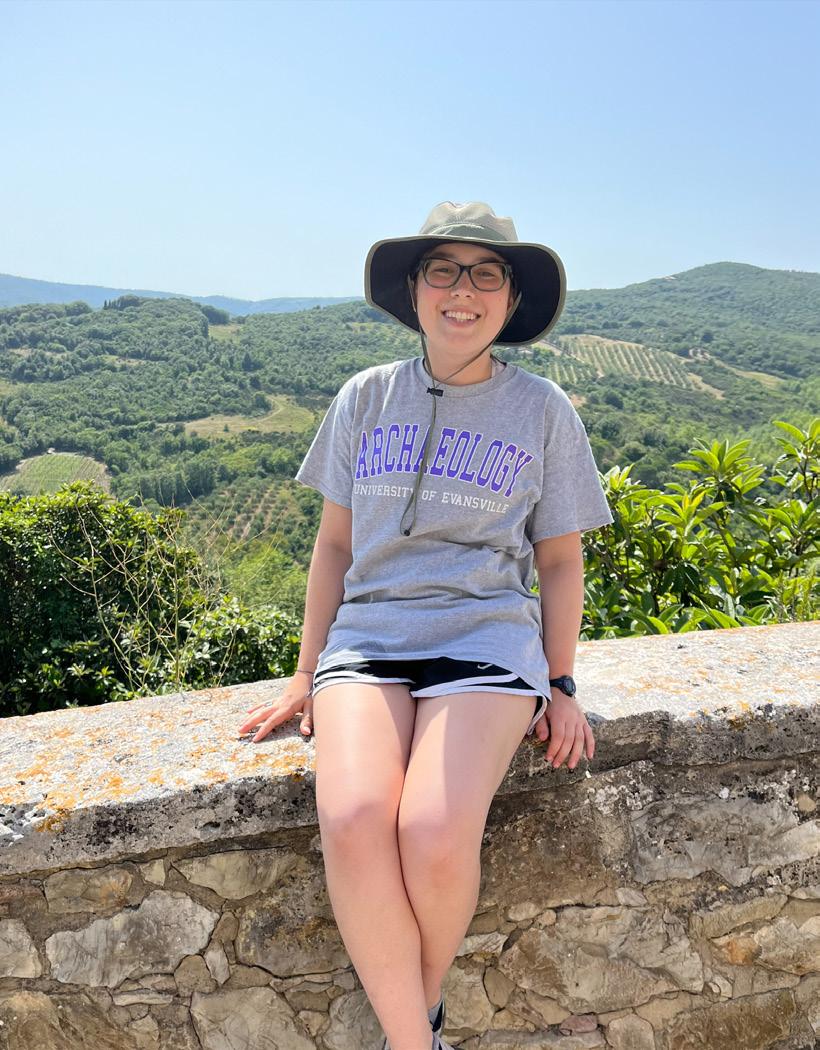

“This summer, I joined a small archaeological expedition crew called the Shipwreck Survey to perform underwater archaeological survey work in the remote islands of the Turks and Caicos in the Caribbean. We primarily worked under the turquoise-green waters around Salt Cay. The small island has about twenty modern residents, but the island itself and its shores were full of unrecorded history. The locals were extremely friendly and welcoming: they caught, cooked, and served fresh conch for our one meal every day. In addition to performing non-invasive archaeological work on several known shipwreck sites, we discovered two new shipwrecks. My favorite dive site was the HMS Endymion, a British warship that sank in 1790. As you can see from the size of the anchor, the ship was massive—but alas, the mighty Endymion was no match for a cluster of submerged, uncharted rocks. After the dive, I was marooned on the remote and uninhabited island of Great Sand Cay, but I managed to make it back to civilization. How? ‘Sea turtles, mate.’”
– Kirby, a sophomore archaeology major

“In the Spring of 2024, I had the pleasure of completing my semester abroad at Harlaxton. While I enjoyed my classes and went on several incredible trips, I also had the unique opportunity to conduct a research project as part of an Undergraduate Research class, where I studied how archaeological organizations in Britain interact with various communities to allow better access to archaeology. I interviewed five people representing different organizations across Britain for this project and, as a result, I was able to publish an article about ways that disabled communities can have better incorporation into archaeological fieldwork. While I was not able to participate in archaeological work while at Harlaxton or over the summer, I nonetheless had a unique and exciting experience that I will be able to call from and build upon for years to come.”
- Sophia, a senior archaeology and anthropology double major
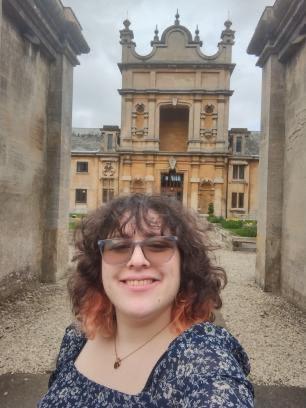
“This past summer, I worked as a field technician for an archaeological firm in my home state of Minnesota. Performing archaeological surveys and laboratory work was a great way to connect to the history of my area and gain experience working in my field. Later in the summer, I attended a three-week study tour of Greece put on by the Hellenic Education and Research Center. A group of students from around the world visited over twenty-three sites and museums in twenty-three days and frequently went behind the scenes with excavation and museum directors. Some highlights included exploring the fortification walls at Messene, snorkeling over a sunken Roman villa off the coast of Epidaurus, touring the Athenian Agora with the head archaeologist, and holding the sword-slashed leg bone of a soldier who died in 338 BC at the Battle of Chaeronea! The trip gave me in-depth knowledge of individual sites, as well as an understanding of both ancient and modern Greece that will impact my learning for the rest of my time at UE and beyond.”
- Grace, a junior archaeology and classics double major

“I spent a month working on an archaeological salvage excavation in northern Romania where we worked on uncovering medieval human remains of the Szekler population, a project that has been active for a decade. There have been close to a thousand burials discovered at this site dating as far back to the 11th century. Alongside excavation, we also worked on properly washing remains recovered from previous years and sorting bones from the project’s nearby ossuary to estimate the minimum number of individuals. The field staff taught lectures to give us a deeper understanding of the local history and myths and how they have affected the current population, as well as how their own research is helping to uncover and preserve Szekler history. We spent the weekends exploring places nearby such as salt mines, local fortified churches, Bran (Dracula’s) Castle, fortresses, and a UNESCO heritage site called Sighisoara. Once our session ended, I spent three days exploring Bucharest, Romania’s capital city.”
-Maddy, a sophomore archaeology and anthropology double major
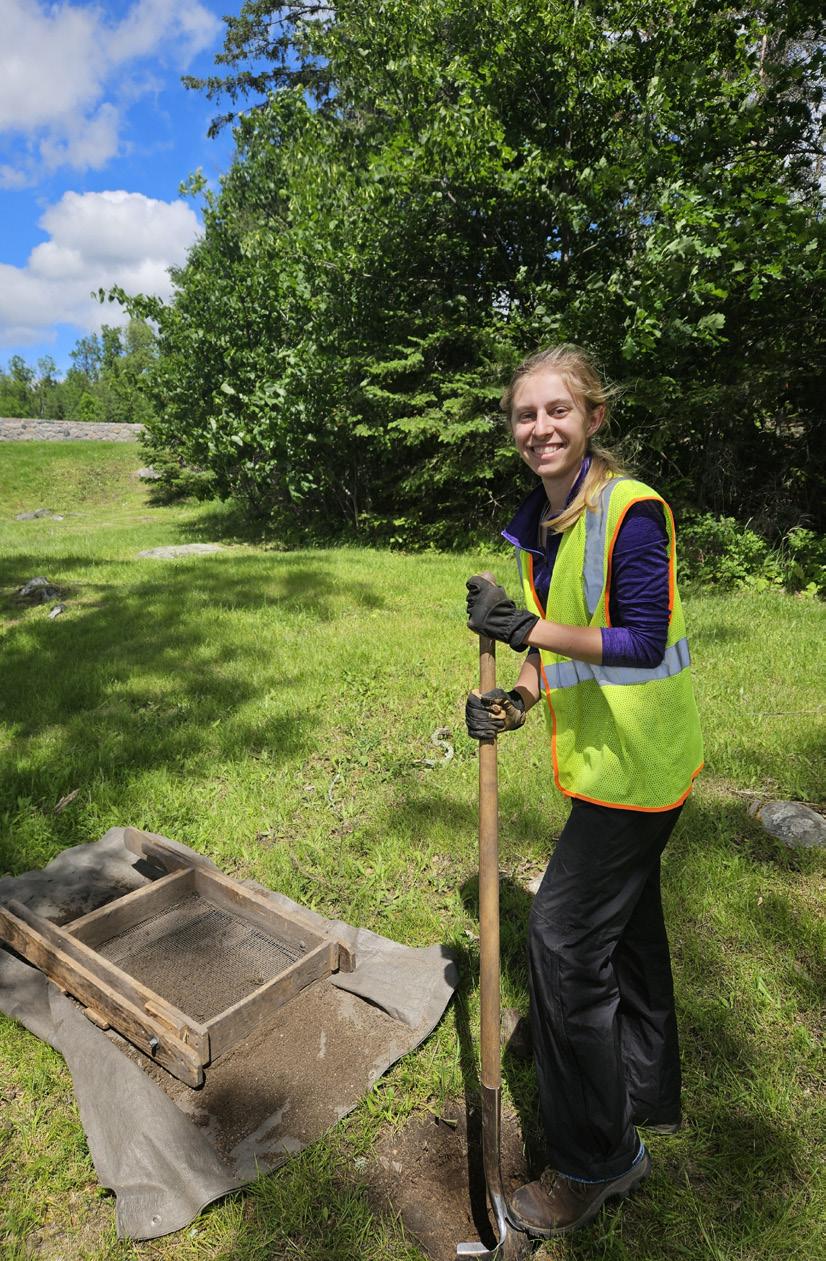


“I participated in an excavation in Portugal, called the Caladnhio Archaeological Project, just outside of a small town called Redondo in the eastern part of the country. We excavated on a Roman hilltop fortification from the first century CE. This settlement oversaw important roads from Spain towards Lisbon, which was a Roman town at the time. Some of the material we found included pottery, slag (a by-product of metalworking), a couple of nails, and loom weights (used in fabric making);I even found a small bead! It felt amazing to find, and I have a picture of me holding it, even though you can hardly see it. In the mornings we excavated, and in the afternoons, we cleaned and sorted artifacts. In addition to learning about archaeology, we got to eat traditional Portuguese meals and experience small-town Portuguese life.”
- Sara, a senior archeology major
“This summer, I spent four weeks in Northern Belize at a dig site with the Maya Research Program. I worked with a team trying to uncover the architecture of Classical Maya buildings. I enjoyed visiting and climbing pyramids at the nearby site of Lamanai that had already been fully excavated and were open to the public. The food we had was amazing, even though we had beans with every meal—a taste that got old fast. I spent a lot of time sifting, so I was the one to find most of our obsidian blades! It was overall a great experience, and I learned a lot!”
- Paige, a sophomore archaeology major

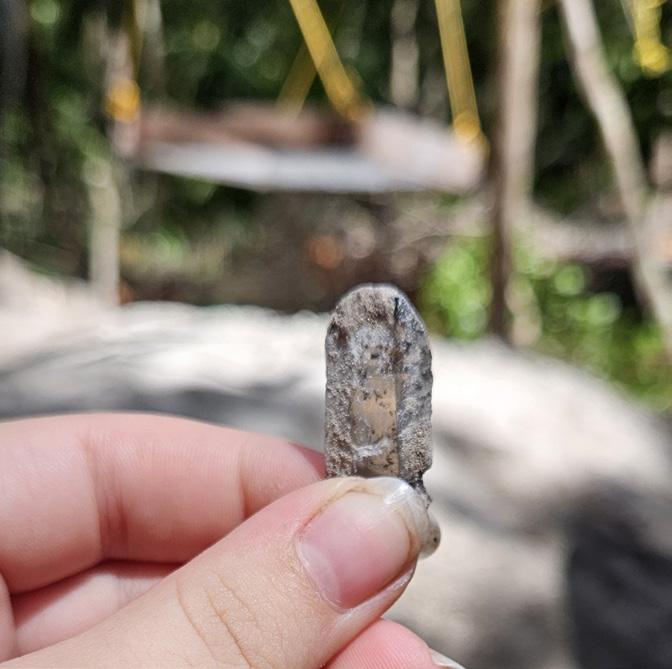
“Over the Summer, I attended an archaeological field school excavating at the acropolis of ancient Thouria on the Greek Peloponnese. During the trip, my classmates and I stayed in the modern village, immersing ourselves in Greek culture and practicing what we knew of the language. As someone who had never travelled before, this was an impactful and life-changing experience. Not only did I work on a fascinating archaeological site, but I also visited ancient Messini and Mycenae—two amazing sites—not to mention the several trips made to nearby Kalamata Beach. Following field school, I stayed in Athens and visited the Acropolis and its Museum. I am so grateful to have had this experience because I know the memories I made will stay with me the rest of my life.”
- Zoe, a junior archaeology major Want

















